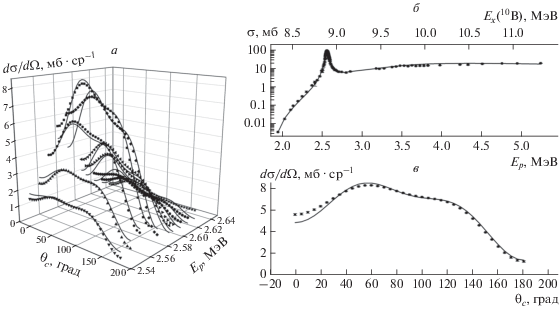The Editorial Board of the journal “Bulletin of the Russian Academy of Sciences: Physics” monthly assigns one of the articles of each thematic issue the honorary status of “Editor’s Choice”. We hope that the selected articles will be of interest to a wide range of readers.
2023
Volume 87, issue 12, December 2023
Thematic issue “Nanooptics, Photonics and Coherent Spectroscopy”
High-performance systems for transmitting and processing large volumes of data improvement requires the development of new fabrication approaches. One of these approaches is photonic integrated circuits creation by adding 3D elements to their architecture. To implement such elements, a two-photon photopolymerization method of direct (3+1)D laser writing was considered. This method provides lithography of 3D microstructures with a controlled change in the properties of the structure material. The advantage of this method is the simplicity of technical implementation, as well as the lower cost of installations for implementing this approach (compared to comparable installations for electron lithography, EUV lithography, epitaxy) for the production of functional photonic structures.
3D microstructures were fabricated considering the results obtained during the study of original photosensitive compositions created based on a methacrylate-containing dye. For this photosensitive composition, the presence of a femtosecond radiation power range from 1 to 5 mW is shown, for which the properties of the polymer material depend on the laser radiation power during lithography. Waveguides were fabricated, the cross-sectional size of which varied from 0.8 to 5 μm, with a core-shell structure, as well as with a Gaussian power distribution across the waveguide cross-section, and the morphology of the resulting structures was studied using laser confocal scanning microscopy (LCSM). For photonic splitters, initial experiments were carried out and visualization of the separation of radiation with a wavelength of 650 nm into four beams was obtained. Also, thanks to the combination of the measuring stand with a confocal microscope, the correlation between light beams and radiation output ports is shown. The demonstrated approach to fabricated photonic 3D microstructures has significant potential for creating hybrid systems combining planar technologies and polymer 3D microstructures. Technological features identified during the research process were considered when developing a unique Russian 3D Lithograph that exceeds the diffraction limit.
The work was carried out by the collaboration of Moscow Institute of Physics and Technology and Lebedev Physical Institute of the Russian Academy of Sciences.
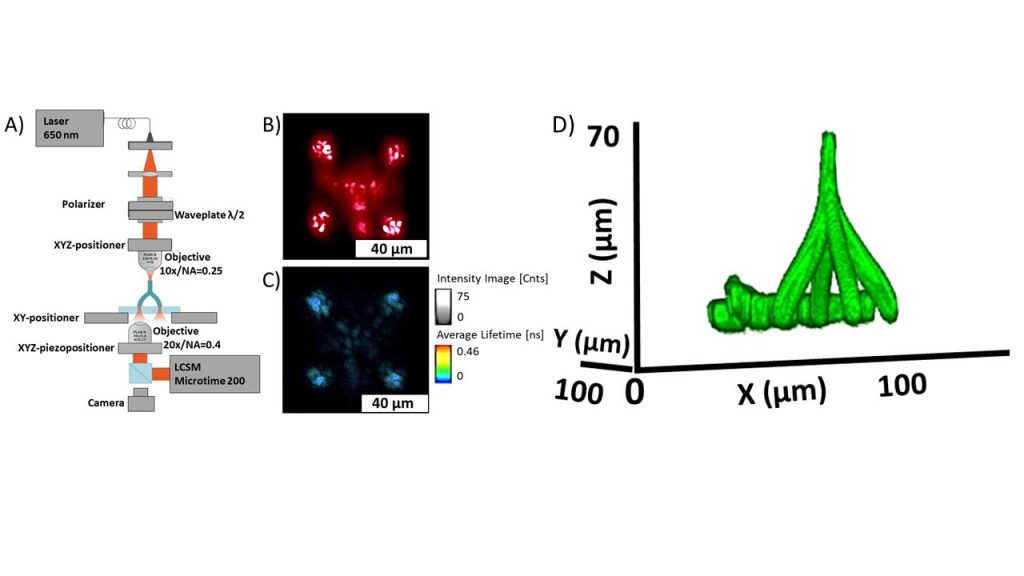
Thematic issue “Physics of Auroral Phenomena”
Magnetic storms are most often associated with the approach of interplanetary coronal mass ejection (ICME) to the Earth. The first moderate magnetic storm of the new solar activity cycle on April 20, 2020, was caused by ICME with low solar wind speed. Typically, the geoeffectiveness of slow CMEs is low and they do not cause intense storms, but the CME that reached the Earth on April 20, 2020, led to the development of significant geomagnetic activity in the Earth’s magnetosphere. Many works have been devoted to the studying magnetic storms caused by fast CMEs, but number of publications devoted to magnetic storms associated with slow CMEs are scarсe, and their high-latitude geomagnetic effects have not been studied practically.
The authors showed that geoeffectiveness of the storm was high despite the low speed of the CME that caused it. It was founded for the first time, during the initial phase of the storm, the development of two high-latitude magnetic field vortices with centers in the post-midnight and afternoon sectors, indicating a local increasing in field-aligned currents under low solar wind speeds. This suggests that the intensification of local field-aligned currents in the magnetosphere did not depend on the solar wind speed. In the main phase of the storm, when the Earth passed the CME “body”- magnetic cloud- with a large value of the interplanetary magnetic field (IMF) modulus, two intense substorms were observed (the value of the planetary index SML was less than -1000 nT), apparently caused by the appearance of large amplitudes of the vertical southward component of the IMF (Bz < 0). It was shown that substorms were accompanied by positive magnetic bays in the mid-latitudes, which indicates the development of the so-called “substorm current wedge”, i.e. three-dimensional current system, including currents in the magnetosphere, field-aligned currents and ionospheric currents closed them.
The work was carried by the researchers from Pushkov Institute of Terrestrial Magnetism, Ionosphere and Radio Wave Propagation (Moscow, Troitsk), Schmidt Institute of Physics of the Earth of the Russian Academy of Sciences (Moscow) and the Polar Geophysical Institute (Apatity).
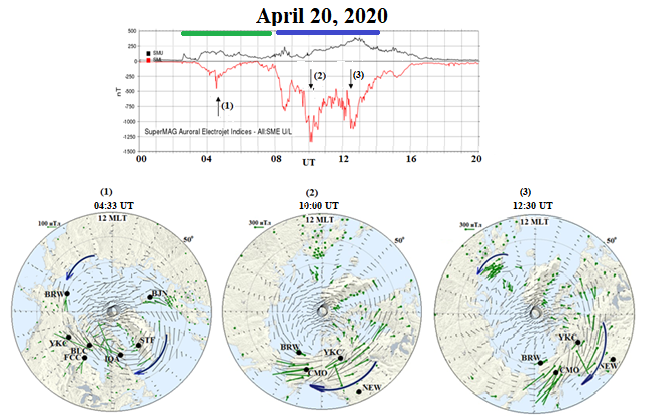
Volume 87, issue 11, November 2023
Thematic issue “Condensed Matter Physics”
Like the spin liquid, the spin nematic state belongs to a family of unusual states of matter where there is no magnetic ordering, but correlations of magnetic moments at sufficiently large distance are essential. Modern quantum physics of magnetism explores these states hoping to open the way for creating new quantum devices, from memory storages to quantum computers. Developments in this area can also help in understanding high-temperature superconductivity. In the Ising spin nematic, studied in this work, the correlations discussed are so strong that they lead to a breakdown of the lattice symmetry and lattice distortion.
In this work, the equilibrium magnetic properties of the Heisenberg model were investigated on a two-dimensional square lattice with the exchange interaction of the first (J1) and second (J2) neighbors by the method of self-consistent spin-wave theory (SSWT). Two modifications of SSWT were used: with auxiliary pseudofermions (PFs), designed to account more accurately for the kinematic constraints of the spin operators, and without them. In both versions, magnetic correlations at low temperatures break the lattice’s symmetry relative to 90°rotations (the Ising nematic phase). At temperature tn = Tn/4J2 S = 0.502/(1.29 + ln(tn/η)) (η = J2/(2J1) is small and S = ½ is spin quantum number) the symmetry of the lattice is restored through a second-order phase transition. At even higher temperatures, in SSWT without PF there is a first order phase transition into the state without correlations.
The work was carried out in the laboratory of the quantum theory of condensed matter of the M.N. Mikheev Institute of Metal Physics of the Ural Branch of the Russian Academy of Sciences (Yekaterinburg).
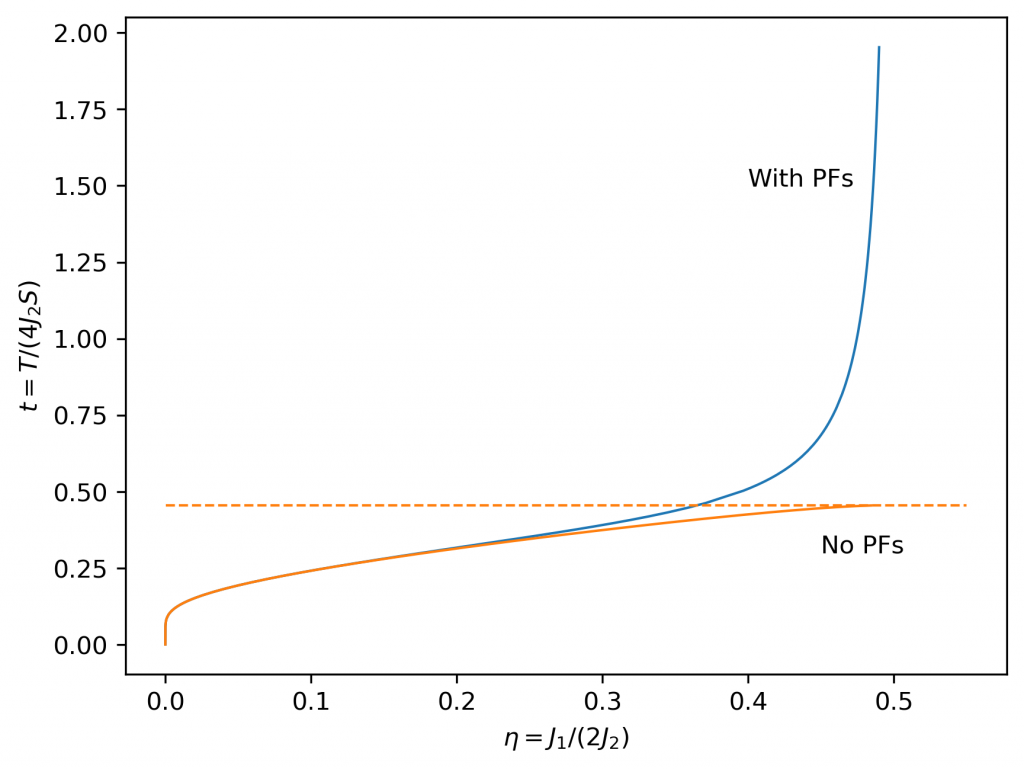
Volume 87, issue 10, October 2023
Thematic issue “Modern methods of electron and scanning probe microscopy and complementary methods in the investigations of nanostructures and nanomaterials”
Single photon emitters (SPE) are among key elements in various problems of quantum informatics, including quantum calculation and quantum cryptography. One of types of such emitters are some kinds of point defects in wide-bandgap semiconductors that may occur both spontaneously during the crystal growth and under an external impact. An important issue for further applications is the development of the approaches of the formation of defects with predefined structure and of the control of their spatial distribution that can be achieved using ion and electron beam techniques. Among wide-bandgap semiconductors, where the defects with SPE properties can be formed, a particular role is assigned to layered materials, one of which is hexagonal boron nitride. A high localization of the action of the charged particle beam is achievable in thin layers of such materials, thus giving the ability of predefined design of SPE distribution.
The authors have found quite noteworthy fact – whereas irradiation with helium ions decreases the intensity of initial luminescence, subsequent electron beam action not only leads to the recovery of the intensity, but even leads to its remarkable enhancement. This fact opens a new technological way of the fabrication of required SPE distribution with nanometer scale accuracy by using ion and electron beams.
This work was carried out by the collaboration of researchers from Saint-Petersburg State University and Free University of Berlin (Germany).
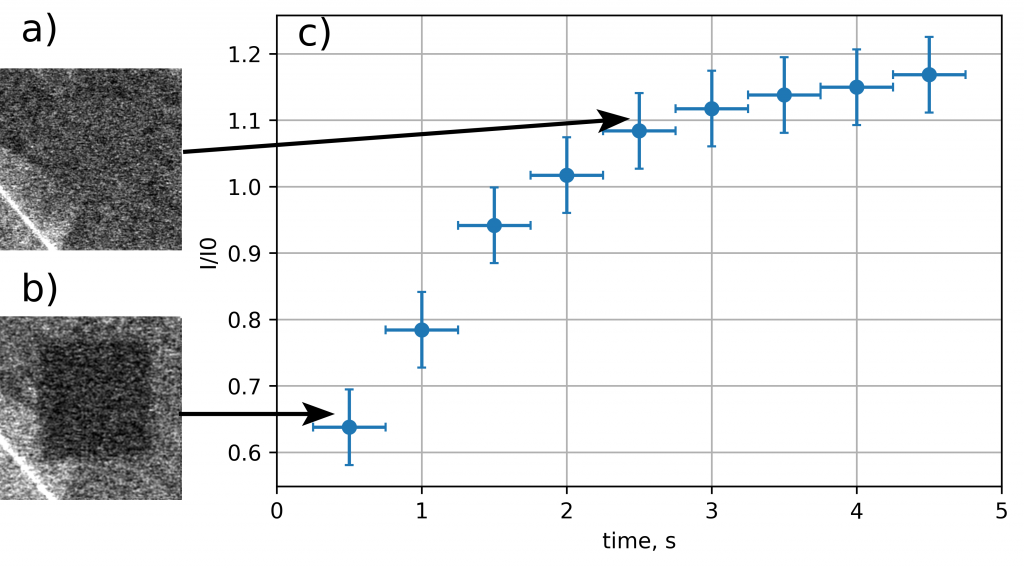
Cathodoluminescence (CL) maps at a wavelength of 650 nm after helium ion irradiation (а) and subsequent electron irradiation (b). The dependence of CL intensity on electron irradiation time (с).
Thematic issue “Electromagnetic Field and Materials (Fundamental Physical Research)”
The effect of a thin layer of antiferromagnet SrMnO3 on the magnetic and resistive characteristics of ferromagnet La0.7Sr0.3MnO3 film in a wide temperature range was studied. The heterostructures were fabricated by using high-frequency magnetron sputtering onto the (110) plane of a substrate. Substrate was made of single-crystal neodymium gallate NdGaO3. Sputtering was carried out at temperature of T = 800 °C and an oxygen pressure of 0.5 mbar for La0.7Sr0.3MnO3 and SrMnO3 layers. The thickness of the La0.7Sr0.3MnO3 film in the heterostructure under study was 44 nm, and the thickness of the SrMnO3 film was 2 nm. Magnetotransport measurements were carried out using a standard scheme in the Van der Pauw configuration on square samples with a side of about 5 mm. The current value, constant in magnitude during the measurement, was ranged from 1 to 100 μA. The magnetic field perpendicular to the sample plane varied within the range of up to 1.5 T. The studies were carried out in a wide temperature range from room temperature to 50 K. This choice was determined by the desire to highlight the various effects of the magnetic field on the kinetic properties of charge carriers in structures.
The transition of the SrMnO3 film from the paramagnetic to antiferromagnetic state was obtained. In an AFM/FM heterostructure, instead of the usual easy axis of anisotropy (opposite directions of the easy axis are equivalent in terms of magnetization), the magnetization in AFM/FM systems has only one easy direction, often called unidirectional anisotropy, which is explained by the occurrence of exchange interaction at the antiferromagnet/ferromagnet interface. From a comparison of Hall measurements for two samples (one a pure manganite (ferromagnet) and the other a ferromagnet–antiferromagnet heterostructure) the presence of an antiferromagnet 2 nm thick sublayer led to the formation of a hysteresis step and a pronounced hysteresis peak at low temperatures. The pure magnet had a maximum shifted along the field in the graphs, the shift of which increased with decreasing temperature. The presence of resistive peaks during Hall measurements indicates the possible occurrence of some non-trivial domain states in these heterostructures. The results obtained will be useful for the development of ultra-fast devices based on antiferromagnets.
The work was carried out by employees of the Kotelnikov Institute of Radio Engineering and Electronics of Russian Academy of Sciences (Moscow and Fryazino Branch).
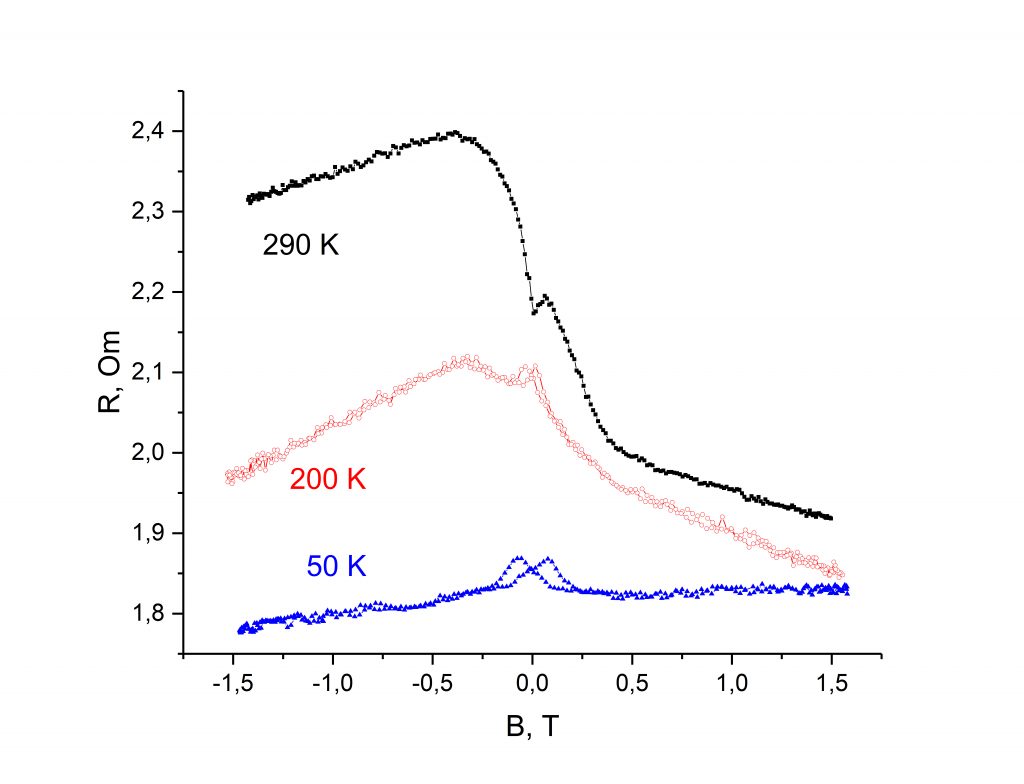
Thematic issue “Physics of Ferroelastics”
Multiorder is a concept of electronic structural organization of matter developed by the authors of the article, which considers all types of interactions in a crystal allowed by its symmetry. Within the framework of this concept, the interdependent coexistence and competition of atomic, orbital, magnetic and charge orderings is considered. The concept of multiorder is based, first, on modern powerful group-theoretic methods of Landau’s theory of phase transitions, the concept of one critical representation and the condensate of order parameters. In this work, the concept of multiorder is illustrated using a current example, the tetragonal phase LiRh2O4.
In the lithium rhodonite, which has a spinel structure (space group Fd3m), two structural transitions occur into the tetragonal (space group I41/amd) and orthorhombic (space group C2122) phases, induced by the eight-dimensional representation k11t5 (Г3+) + k10t2 (X4). Group theoretical analysis showed that the structural mechanism of the tetragonal LiRh2O4 phase formation consists of displacements of oxygen atoms, tilts of octahedra and ordering of rhodium t2g orbitals. The constructed basis functions of the critical irreducible representation, obtained on the displacements of oxygen atoms and the ordering of the d-orbitals of rhodium, made it possible to theoretically derive the atomic and orbital structures of the tetragonal phase. The formation of the tetragonal phase occurs due to the overlap of dyz and dxz orbitals. The crystal chemical features of the structure of the tetragonal phase have been established and it has been shown that there is no charge ordering of rhodium ions in this structure. Components of the homogeneous tension–compression strain tensor transform according to presentation k11t5 (Г3+). Therefore, the tetragonal phase LiRh2O4 is proper ferroelastic.
Thus, the multiorder and structural mechanism of formation of the tetragonal phase of lithium rhodonite are associated with structural and orbital degrees of freedom, namely, with the displacement of oxygen atoms, the tilts of [RhO]6 octahedra and the ordering of rhodium t2g orbitals. The work was carried by the collaboration of the researchers from the Laboratory of Terahertz Spectroscopy of the Moscow Institute of Physics and Technology (Dolgoprudny), the Southern Scientific Center (Rostov-on-Don), and the South Russian State Polytechnic University (Novocherkassk).
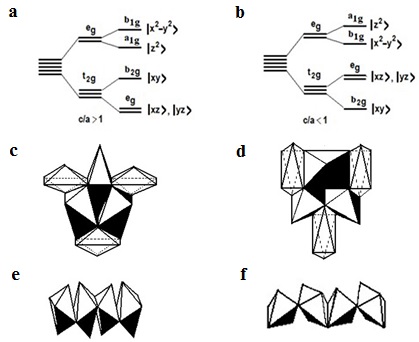
Splitting of energy levels of a transition metal in the octahedral field created by oxygen atoms in cubic and tetragonal phases (for different degrees of tetragonality (c/a); the tetragonal phase LiRh2O4 is characterized by c/a > 1) (a, b) and calculated “nematicity” of the cooperative orientation of distorted octahedra in tetragonal phases (c, d, e, f).
Thematic issue “Relaxation Phenomena in Solids”
One of the problems preventing the widespread use of hydrogen in the energy sector is the problem of its mobile storage and transportation. Currently, a search is underway for materials capable of holding a large weight fraction of hydrogen and hydrogenating under relatively “mild” conditions. A possible solution to this problem is the use of nanostructured magnesium-based materials as an adsorption medium. In this case, the effective surface area (and, consequently, the adsorption capacity of the material) increases by orders of magnitude, several effects characteristic of nano-sized objects appear, and the chemical activity of the material increases significantly. An important task in this case is to ensure the formation of nanostructured magnesium without oxidation of its surface.
The authors obtained multilayer nanostructures (Mg/ZrO2)52 with different bilayer thicknesses (Mg + ZrO2), studied the patterns of their formation and the features of the electrical properties of these structures. It has been shown that because of sequential deposition of pure magnesium and pure zirconium oxide in an argon environment (8.2∙10-4 Torr), a multilayer nanostructure (Mg/ZrO2)52 with unoxidized layers of magnesium of nanosized thickness is formed. Multilayer nanostructures (Mg/ZrO2)52 (index 52 is the number of bilayers) with different thicknesses of magnesium layers at a constant thickness of zirconium dioxide layers were obtained. The thickness of one bilayer (Mg+ZrO2) varies from 3.6 to 8.5 nm. It has been established that at small bilayer thicknesses (in the range of 3.5 to 4 nm), the magnesium layers are not continuous, but discrete (consisting of metallic nanogranules that are not in contact with each other), which is confirmed by the electrical properties of multilayer nanostructures. When the bilayer thickness exceeds 5 nm, a nanostructure with continuous layers of magnesium is formed. Thus, from the point of view of electrical properties, the multilayer nanostructure (Mg/ZrO2)52 behaves as a percolation system with a change in the electrical transfer mechanism as the thickness of the magnesium layers increases. We show the possibility of obtaining unoxidized magnesium nanoparticles and nanometer-thick magnesium layers distributed between zirconium oxide layers which is important for different applications.
The work was carried out jointly by employees of the Voronezh State Technical University and the Kirensky Institute of Physics of the Siberian Branch of the Russian Academy of Sciences (Krasnoyarsk).
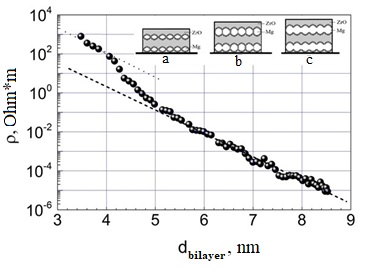
Dependence of the resistivity of a multilayer nanostructure (Mg/ZrO2)52 on the thickness of one bilayer. The insets show a diagram of the structure of multilayer samples (Mg/ZrO2)52: a – discrete layers of magnesium; b – percolation threshold, c – continuous layers of magnesium
Thematic issue “Fundamental Problems and Applications of Atomic Nucleus Physics”
Today, in the physics of low-energy nuclear reactions, there is a great interest in studying the mechanisms of formation and decay of light and medium mass group nuclei. This is very important both fundamental interest in nuclear physics, astrophysics, and industrial production of radionuclides. For example, one of the most interesting problems arising in modern physics is the quantitative description of the elements formation processes in the Universe, which is closely related to current problems of cosmology. From this point of view, the study of nuclear fusion reactions with energies near the Coulomb barrier is much more promising. Because these process play a key role in the evolution of stars and determine the scenarios for the supernovae formation. On the other hand, these reactions make it possible to study the properties of many-particle systems tunneling, which is important for modern quantum mechanics. Such studies require a more detailed analysis of experimental and theoretical data, and sometimes a revision of existing results.
The paper is a continuation of the author’s team researches have been conducting in recent years in the field of astrophysical nuclear reactions. In this work for the first time, a systematic approach to describing reactions in the specified range of energies and masses was carried out and an analysis of the astrophysical S-factor (the intensity of reactions in nuclear astrophysics) based on the approach associated with the use of a rectangular potential well was done. The advantage of such a model is the small number of parameters, simplicity of calculations and minimization of computing resources. Based on the obtained systematics of parameters, it was shown the main contribution to the barrier at short distances was due to the Coulomb potential, and the contribution of nuclear interaction was small and almost constant over the whole range under consideration. Thus, this method provides a unique opportunity to compare the intensity of such processes in different interacting systems, since using the S-factor we obtain the values dispersion almost 40 orders of magnitude! Using a simple approach within the framework of the considered model, the normalized cross section dispersion is obtained within one order of magnitude. These results are illustrated in the figure, shows the S-factor experimental values normalized to the values obtained within the framework of the proposed approach. As can be seen, there is a very good agreement, which allows not only to predict the cross-section behavior for low energies, but also to better understand the mechanism of the fusion reactions.
The study has been performed by researchers from St. Petersburg State University (St. Petersburg).
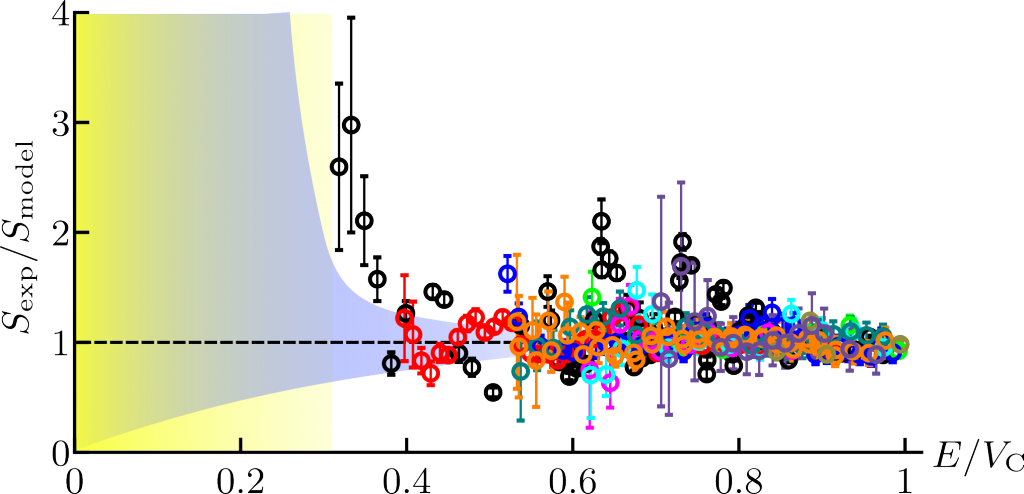
The ratio of the experimental S-factor to obtained within the framework of the considered model, as a function of the energy of nuclei divided by the height of the Coulomb barrier (colors correspond to different combinations of nuclei). The violet region corresponds to the spread of theoretical predictions, and the yellow region corresponds to the conditions that arise in stars.
Thematic issue “Physics of Cosmic Rays”
Today, the term «cosmic rays» (CR) refers to a flux of high-energy (energy up to ⁓ 1020 eV) charged particles of extraterrestrial origin, such as protons, α-particles, and heavier nuclei. In a less strict sense, electrons, positrons, gamma rays and neutrinos can also be included in this definition. The study of CR is of great interest from the point of view of understanding the mechanisms and the nature of their origin, which is one of the most important tasks of modern astrophysics. Detection of cosmic radiation with energies above 1015 eV is carried out using the only possible method based on the property of cosmic rays to generate cascades of secondary particles in the Earth’s atmosphere – the so-called extensive air showers (EAS). An EAS contains electron-photon, hadron, muon, and neutrino components, and is also a source of Cherenkov, ionization, and radio frequency radiation. All these components, except for neutrinos, can be directly detected by ground-based installations, and their reconstructed characteristics are used to determine the properties of primary particles. Up to an energy of 1015 eV, CR can be studied both by detecting EAS and by direct measurements performed using high-altitude balloons or artificial Earth satellites.
The article is devoted to the Tunka-Grande scintillation installation, which is part of the TAIGA (Tunka Advanced Instrument for cosmic rays and Gamma Astronomy) astrophysical complex. The purpose of the experiment is to study cosmic radiation in the energy range 1016−1018 eV by detecting the electron-photon and muon components of EAS. The article describes the structure of the installation, estimates the error in reconstructing of EAS and CR parameters, presents the main scientific results for the first five seasons of measurements in the form of the differential energy spectrum of CR and constraints on the flux of diffuse cosmic gamma radiation in the energy range 1016−1018 eV, and discusses prospects for studying CR. The authors showed that the accuracy of determining the direction of arrival of the EAS axis and its position in the installation plane is no worse than 2.3° and 26 m, respectively, and the energy resolution of the installation doesn’t exceed 36%. The reconstructed differential CR energy spectrum demonstrates a complex structure with statistically significant features at energies ⁓ 2·1016 and 1017 eV. The upper limit on the flux of diffuse gamma radiation doesn’t contradict similar results from other experiments. The results obtained are at the world level and can be used to confirm, develop, or exclude existing astrophysical models.
The work was carried out by members of the TAIGA collaboration.
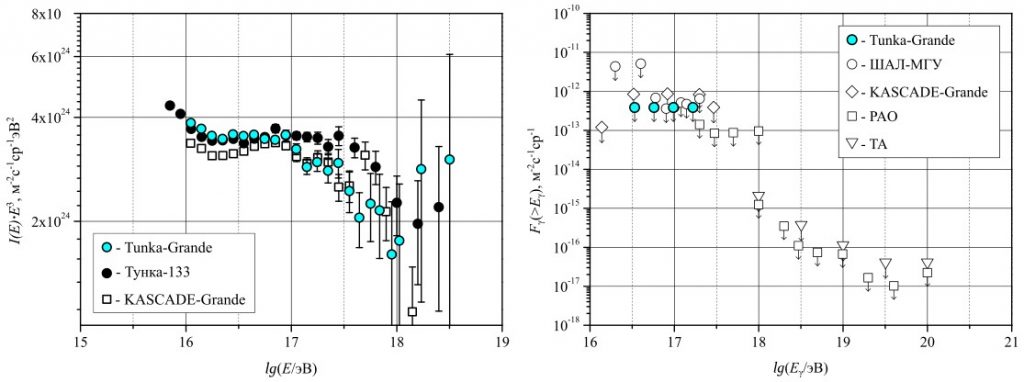
Differential CR energy spectrum (left) and constraints on the integral flux of diffuse gamma radiation (right) according to experimental data from the Tunka-Grande installation in comparison with similar results from other experiments.
Thematic issue “Smart Composites”
We described the process of preparation and surface modification of magnetic iron oxide nanoparticles. The particles of the order of 10 nm in size were obtained by co-precipitation and possessed superparamagnetic properties.
It was noticed that surface modification of nanoparticles using anionic surfactant sodium dodecyl sulfate increases the electrostatic attraction to the methylene blue cation and also prevents the aggregation of nanoparticles. This leads to a significant increase in the sorption capacity of magnetic nanoparticles compared to unmodified iron oxide nanoparticles.
Possible applications of such magnetic nanoparticles include removal of various contaminants from aqueous solutions. We focused on the magnetic properties of nanoparticles and the removal of cationic dye methylene blue using them. The sorption of methylene blue on the surface of magnetic nanoparticles follows a pseudo-second order kinetic model, indicating the chemical nature of the process. The sorption process of the dye on the modified nanoparticles is described. Due to the magnetic properties of the nanoparticles, they can be extracted from the solution along with the dye using a magnetic field, which makes the purification process more efficient and convenient.
Thus, magnetic nanoparticles modified with sodium dodecyl sulfate represent a promising material for removing contaminants from aqueous solutions. The ability of magnetic nanoparticles to be magnetically extracted makes them particularly attractive for use in a variety of water purification processes.
The study was carried out by a collaboration of the researchers from the Immanuel Kant Baltic Federal University (Kaliningrad) and Dagestan State University (Makhachkala).
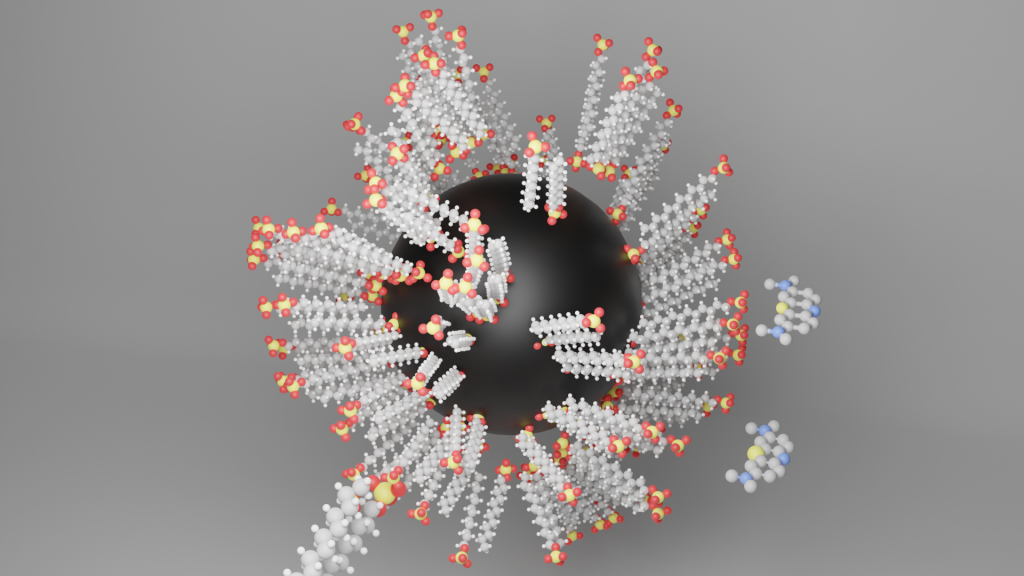
3D model of the scheme of sorption of dye – methylene blue on magnetic nanoparticles Fe3O4 modified with sodium dodecyl sulfate
The Gunn effect is an instability in homogeneous carrier flow in semiconductors with negative differential electron mobility (NDM) that leads to the formation of a drifting soliton-like high-field domain. The monopolar Gunn effect in n-type GaAs is known from the 1960s and has important applications in microwave generation. In contrast to the classical monopolar effect, the bipolar Gunn effect is caused by domain instability in non-equilibrium electron-hole plasma. Interest in the bipolar Gunn effect emerged in the mid-2000s in fast pulse power electronics, a neighboring field of studies to microwave research.
The authors have conducted experimental and numerical studies of GaAs pulse power avalanche diodes. A prolonged (sub-microsecond) self-sustaining high conducting state after subnanosecond impact-ionization switching (the lock-on effect) has been discovered. This effect is explained by the spontaneous appearance of ionizing Gunn domains in electron-hole plasma created during avalanche switching. Such domains were first described by S. Vainshtein and V. Yuferev in their studies of superfast switching of GaAs avalanche transistors. These multiple ionizing domains are quantitatively different from both classical monopolar Gunn domains and non-ionizing Gunn domains predicted by B. Gel’mont and M. Shur in 1970s. The spatiotemporal dynamics of ionizing bipolar domains represent an instance of deterministic chaos. The domains disappear (collapse) at unpredictable times, thus coining the term “collapsing domains”. Collapsing domains are responsible for not only the self-sustaining conducting state but also sub-nanosecond switching. Authors present a short review of GaAs pulse power devices, in which ionizing bipolar Gunn domains play a constructive role as the mechanism of electron-hole plasma generation.
The study has been performed by researchers from the Ioffe Institute RAS (St. Petersburg).

Results of measurements and simulations of the diode voltage and current in the lock-on regime. The insert shows the electric field distribution in the diode base
Thematic issue “Synchrotron Radiation and Free Electron Laser Radiation: Generation and Application”
Recently, the attention of researchers has increasingly been attracted to compounds of 5d transition metals that exhibit exotic magnetic properties due to the presence of strong spin-orbit interaction, the energy of which is comparable to the Coulomb energy and crystal field stabilization energy. The balance of these interactions leads to a variety of physical properties, such as the presence of a metal–insulator transition of the Mott–Hubbard type, anomalous and spin Hall effects, the Rashba effect, the formation of skyrmions and other effects associated with the Kitaev interaction.
The X-ray Absorption Near Edge Structure method (XANES) allows to study changes in electronic structure and is actively used to study 4d and 5d transition metals. For XANES spectra at the edges of ligand atoms, it is shown that the intensity of the pre-edge features strongly depends on the degree of hybridization of the ligand and the central metal orbitals. It is worth noting that the L3 edges of metals do not have such a resolved pre-edge structure. To study the ligand-meal chemical bond and the influence of spin-orbit interaction on the structure of the Cl K-edge XANES spectra, a number of isolated octahedral {MCl6}n- (M = Rh, Pd, Re, Os, Ir, Pt) complexes, as well as compounds osmium with exchange interactions.
Theoretical analysis of XANES spectra of Os compounds with various combinations of ligands and outer-sphere cations showed that the electronic structure and magnetic properties depend on various factors, including spin-orbit coupling, crystal field strength, electron pairing energy and non-cubic distortions. Thus, XANES spectra of Cl K-edges of transition metal compounds have proven effective in studying the interaction of ligands with the central metal atom.
The work was carried out by the collaboration of the Nikolaev Institute of Inorganic Chemistry, Budker Institute of Nuclear Physics, and Boreskov Institute of Catalysis of the Siberian Branch of the Russian Academy of Sciences (Novosibirsk).
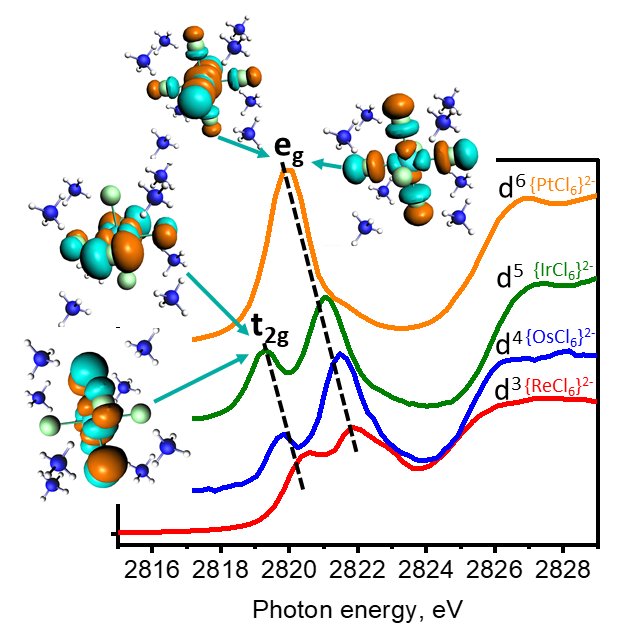
XANES Cl K-edge spectra of isolated {MCl6}n- complexes and the structure of the t2g and eg molecular orbitals forming the spectrum pre-edge features
Thematic issue “Fundamental Problems of Functional Materials Physics”
The volume of stored and processed data is constantly increasing, and consequently an increased amount of computer memory is required. In turn, that consumes a huge amount of energy and occupies large memory space. The possible solution to this problem could be the development of the next generation high-performance semiconductor devices. An important task to achieve this goal is to create non-volatile, CMOS-compatible devices for storing information with higher speed, lower power consumption, endurance, and scaling capabilities. One of the most promising technologies is the concept of non-volatile memory based on ferroelectrics.
This work is devoted to computer modeling of the electrical and structural properties of thin films based on hafnium oxide, a promising material where the thin films ferroelectricity has recently been discovered. The DFT (computational method based on density functional theory) and DFT+U (DFT adjusted for strongly correlated electrons) methods were used to compare four crystalline phases of hafnium oxide, emphasizing possible differences in properties of the hafnium oxide phases. It was found that the thin films of tetragonal and cubic phases are conductors. The monoclinic phase turned out to be a dielectric, while the orthorhombic phase turned out to be a dielectric or a semiconductor (depending on the layer thickness/number of layers). Besides, optimized HfO2/Si heterostructure with a tetragonal hafnium oxide phase also exhibits conductivity, the source of which is the interfacial oxygen atoms.
The work was carried by researchers from the Zavoisky Physical-Technical Institute of the Federal Research Center Kazan Scientific Center of the Russian Academy of Science and Kazan Federal University.
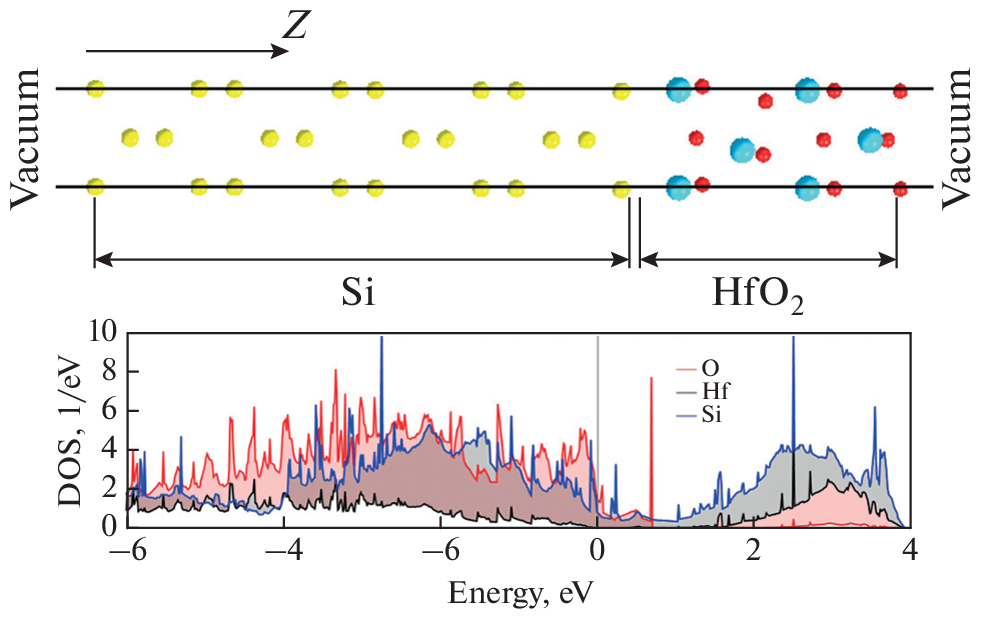
The heterostructure of HfO2/Si. Blue balls are Hf atoms, red – O, yellow – Si. Below is the spectrum of the density of states of this heterostructure, which implies that it conducts an electric current
Thematic issue “Fundamental problems and trends in magnetism”
Solid-state magnetic cooling is a technology based on the magnetocaloric effect (MCE), which could reduce global energy consumption and preclude the use of such environmentally unfriendly coolants as freon. Modern biology, medicine, and the food industry have an overwhelming need for convenient, noiseless, safe, vibration-free, and compact cooling units for the prolonged storage of unique biomaterials, vaccines, pharmaceuticals, and food products at strictly fixed temperatures commonly much lower than room. This work is focused on creating new magnetic materials with high MCE values in the temperature range of 100–290 K, suitable for solid-state magnetic cooling.
Authors of this article investigate and analyze the magnetocaloric characteristics of the two most important systems: compounds of the (R,R’)(Co,T)2 type with Laves phase structure, and layered magnetics with general formula R(Mn,T)Si containing substitutional (T = Fe, Co, Al). The interstitial atoms (hydrogen atoms) are used in this work to modify the basic properties of compounds along with the substitution atoms. The compounds contain from two to five components, while using up to three different rare earth elements in one composition. Important regularities in the change in the temperature of the transition from a magnetically ordered to a disordered state (Curie temperatures), as well as the change in the value of the MCE (magnetic part of the entropy and/or adiabatic temperature change) of the studied samples depending on the composition, have been established. It was established that the MCE can be substantial for RCo2 compounds (ΔTad/μ0ΔH = 2 K/Т) with Curie temperature TС < 200 K and RMnSi compounds (ΔTad/μ0ΔH = 1.2 K/Т) with Curie temperature TС < 150 K. Inserting hydrogen atoms into the crystal lattice of such compounds has a significant effect on the Curie temperature, decreasing it. It was found that stabilization of the MCE can be observed in multicomponent compounds of the (R,R’,R”)(Co,T)2 type, regardless of their composition. Such compounds are most attractive candidates for practical application.
The work was carried by the collaboration of the researchers from Moscow State University & Baikov Institute of Metallurgy and Materials Science of the Russian Academy of Sciences.
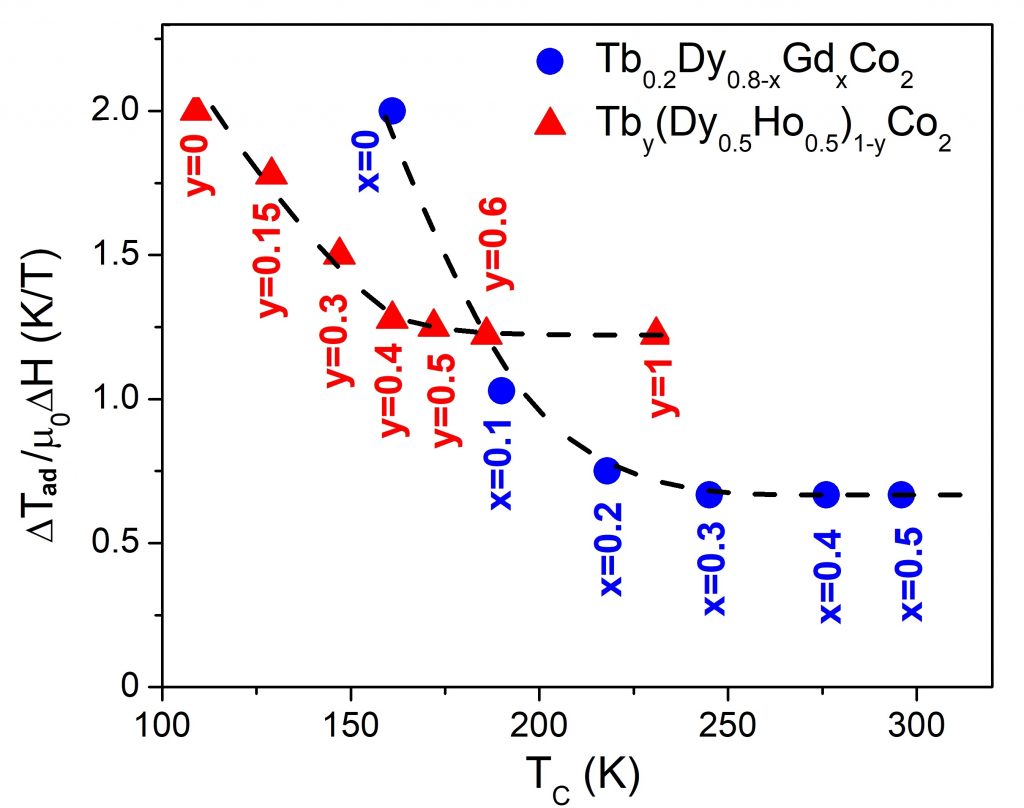
The change in the value of ΔTad/μ0ΔH from the value of the Curie temperature TC of multicomponent systems. The result is the ability to stabilize the MCE value.
Thematic issue “New materials and technologies for security systems”
The problem of rapid specific identification of respiratory viruses is particularly relevant in the light of the recent pandemics of Covid-19 and influenza. The diseases can be asymptomatic, which provides additional risks of infection spreading. For the specific determination of viruses, nucleic acid-based aptamers (hereinafter referred to as aptamers) can be used. Aptamers are oligonucleotides with unique spatial structures. The aptamer structure is topologically complementary to the target surface, which allows specific and highly affine binding of various targets in biological media, for example, viral particles in smears or flushes from the nasopharynx of patients. The mechanism of action of aptamers is similar to antibodies; however, the possibilities of chemical synthesis, ease of assembly and high stability of active conformation give them additional advantages in practical applications.
In this paper, to determine ultra-low concentrations of viruses, a combination of specific recognition of the analyte by aptamers, concentrating through membrane filtration and surface-enhanced Raman scattering (SERS) amplifying the analytical signal by six orders of magnitude is proposed. Optimization of the SERS-active surface, which increases the stability of the nanostructured surface in biological fluids and phosphate buffers, has been carried out. The detection limit of the proposed sensor, determined by the intensity of surface-enhanced fluorescence, was 2·104 viral particles per ml of influenza A virus, which is 2-4 orders of magnitude lower than the detection limits of antibody-based rapid test systems. The results obtained open up prospects for the widespread use of optical sensors for the detection of molecular targets.
The work was carried by the collaboration of the researchers from Osip’yan Institute of Solid State Physics of the Russian Academy of Sciences, Joint Institute for Nuclear Research, Moscow State University & Chumakov Federal Scientific Center for Research and Development of Immune and Biological Products of the Russian Academy of Sciences (Russia).
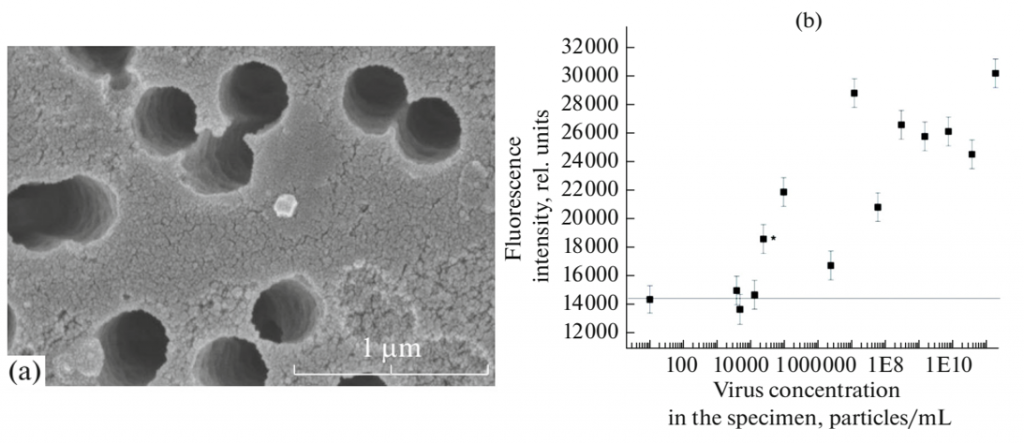
Scanning electron microscopy of membrane samples with a layer of nanostructured silver doped with chromium (a) and the dependence of the fluorescent signal at 1180 cm–1 on the concentration of influenza A virus subtype H7N1 (b). * The observed limit of detection of influenza A virus is marked.
Thematic issue “Wave Phenomena: Physics and Applications”
In recent years, there has been great interest in the development of compact photonic structures for differentiating optical signals and for the optical implementation of more complex differential operators. Under the differentiation of optical signals, the calculation of a derivative with respect to time or a spatial coordinate of the profile of the incident pulse or beam is understood. The transformation of an optical signal that occurs upon interaction with a diffractive structure can be described as a transformation by a linear system, the transfer function (TF) of which is given by the reflection or transmission coefficient of the structure, considered as a function of the angular and/or spatial frequency. The TF of an ideal differentiator possesses a zero at the central frequency, and, therefore, a necessary condition for optical differentiation is the presence of a zero in the reflection or transmission spectrum of the diffractive structure.
In this work, we for the first time theoretically describe and numerically demonstrate the utilization of a composite metal-dielectric-metal (MDM) structure for implementing second-order “spatiotemporal” differentiation of an incident optical signal. The proposed composite structure consists of two three-layer MDM structures separated by a dielectric layer. Under the “spatiotemporal” differentiation, the calculation of a differential operator that is equal to a linear combination of derivatives of the corresponding order with respect to time and a spatial coordinate is understood. In the paper, it is theoretically shown that in the case of normal incidence of an optical signal, a composite MDM structure can be designed, which possesses a second-order reflection zero with respect to both the angular and spatial frequency, which makes it possible to implement the second-order spatiotemporal differentiation operation. On the basis of rigorous electromagnetic numerical simulations, it is shown that this operation is implemented with high quality (with a root-mean-square error of less than 2%). It is also shown that the composite MDM structure makes it possible to form different optical pulses depending on the polarization of the incident radiation. The obtained results can be used in the development of systems for analog optical computing and optical information processing.
The work was carried out at the Diffractive optics laboratory of IPSI RAS — branch of the FSRC “Crystallography and photonics” of Russian Academy of Sciences (research fields: analog optical computing, nanophotonics, optical properties of multilayer structures.

Geometry of the composite MDM structure (left) and numerically (center) and analytically (right) calculated absolute values of the reflected spatiotemporal TM-polarized optical pulse envelope, illustrating second-order “spatiotemporal” differentiation.
2022
Thematic issue “Nano-optics, Photonics, and Coherent Spectroscopy”
In the field of optical manipulations, interest in the use of vortex light fields of complex structure does not weaken. That fields allowing to significantly expand the functionality of laser tweezers. Among the actual ones are the tasks of assembling particles of micron and submicron sizes, including biological ones, into specified configurations; implementation of tunable movements of ensembles of micro-objects in space through the use of only optical forces. Another trend in the development of methods for manipulating micro- and nanoobjects is the use of so-called optothermal or convection traps. In such traps, a sharply focused laser beam is used not only to create an optical power, but also a temperature gradient, and, accordingly, convection flows. Optothermal traps make it possible to capture and move objects of various shapes, ranging in size from nanometers to tens of micrometers, both transparent and absorbing, and from relatively large distances. As a rule, point convection traps are used.
The authors of this article for the first time implemented optothermal traps of complex configurations, including triangle and square boundaries, double contours, and zero grids. The features of the formation and experimental realization of the considered vortex light fields with the help of a liquid-crystal spatial modulator (LC SLM) were briefly described. The results of experiments on the alignment of latex microparticles in determined configurations with the capability of their rearrangement through the use of LC PMS were demonstrated. A simple efficient method for fixing microobjects in a given configuration at the bottom of a cell is proposed by adding albumin to the cell with samples and briefly increasing the laser power. Typical power values are 60–130 mW depending on albumin concentration. The method may be of interest for fixing objects of biological origin.
The work was carried out in in the laboratory of coherent optics of the Samara branch of Lebedev Physical Institute (research fields of vortex light fields, manipulation of micro-objects).

Experimental results for capturing latex microparticles with a diameter of 3 (first two frames) and 4 µm using optothermal traps formed by vortex fields in the form of single and double contours, a lattice of zeros. The result of fixing transparent latex microparticles 4 µm in size (fourth frame).
Thematic issue “Crystal Physics and Mechanical Behavior of Advanced Materials”
One of the most effective ways to control the properties of materials is a large plastic deformation. Previously, the authors studied the effects of large plastic deformations on phase transformations and, as a consequence, on the mechanical and magnetic properties of metallic ferromagnetic materials.
In this work, these studies were continued, and the effect of megaplastic deformation (MPD) during high-pressure torsion (HPT) on the evolution of the structure and magnetic and mechanical properties of the Fe50Co25Ni25 alloy, which consists of three 3d-ferromagnetic metals stable at room temperature, is analyzed in detail. In terms of its chemical composition, this alloy of the three-component Fe50(Co50Ni50-x) system in the equilibrium state is located at the boundary of two phases (the bcc phase with Co > 25 at. % and the fcc phase with Ni > 25 at. %), which attracts him of particular interest due to the impact of MTD. The “boundary” Fe50Co25Ni25 alloy has high magnetic properties. The effect of a change in the nature of the structure on the magnetic and mechanical properties of the alloy has been demonstrated, but the effect of possible phase transformations that can occur under the influence of SPD has not been studied. X-ray diffraction analysis, studies by the method of transmission electron microscopy, as well as measurements of microhardness and coercive force, were performed, the features of the formation of the structure and properties of the Fe50Co25Ni25 alloy depending on the value of HPT were studied. The change in the phase composition of the alloy, γ-α transformations under the action of torsion deformation is shown. The disappearance of the 0.5 phase is analyzed. An increase in hardness and coercive force associated with a change in internal stresses in the material is shown. The effect of deformation on the saturation magnetization is established. It is shown that because of changing the phase composition and the lattice parameter in the process of torsion deformation, the saturation magnetization increases significantly.
The work was carried out at the National Research Technological University “MISiS” and the Bardin Central Research Institute of Ferrous Metallurgy in collaboration with Lomonosov Moscow State University.

Left: diffraction pattern and dark-field image of the γ-phase in the absence of HPT. Right: change in the content of the γ-phase depending on the HPT value (the number of rotations of the Bridgman chamber N).
Thematic issue “Advances in Modern Photonics”
The success of photocatalytic technologies is largely determined by the development of methods for creating efficient, stable, cheap, and environmentally friendly photocatalysts. Currently, high-energy laser methods for obtaining various functional materials are being successfully developed. Relative simplicity, wide variability, the possibility of obtaining unstable phases, and the minimal use of precursors in laser synthesis make it possible to obtain catalysts unique in composition, structure, and morphology for various applications.
One of the promising classes of photocatalysts is complex bismuth-containing oxides and composites based on them. Semiconductor nanostructures based on bismuth compounds (BMeO), where Ti, V, W, etc. act as Me, attract attention for the processes of photocatalytic purification of water and air from toxic organic compounds. These materials include bismuth titanate with the sillenite structure of the stoichiometric composition Bi12TiO20. The polyhedra in its structure with a lone pair of electrons Bi-O serve as electron donors and allow better separation of photogenerated charge carriers.
This article studies the effect of synthesis conditions on the structure and morphology of bismuth titanate with the Bi12TiO20 structure. An original approach was used that combines pulsed laser ablation to obtain individual bismuth-based colloids and additional plasma laser treatment of a mixture of colloids to form a Bi-Ti-O interface. Variation in the concentration of precursors, saturation of the reaction mixture with CO2, and additional heat treatment make it possible to effectively control the composition of the resulting catalysts from the pure Bi12TiO20 phase to the type II α-Bi2O3/Bi12TiO20 heterostructure with different phase ratios, thereby affecting their photocatalytic activity.
The work was carried out at the Laboratory of Advanced Materials and Technology of the National Research Tomsk State University. Research fields: laser synthesis of semiconductor nanostructures, heterostructures, heterogeneous photocatalysis.
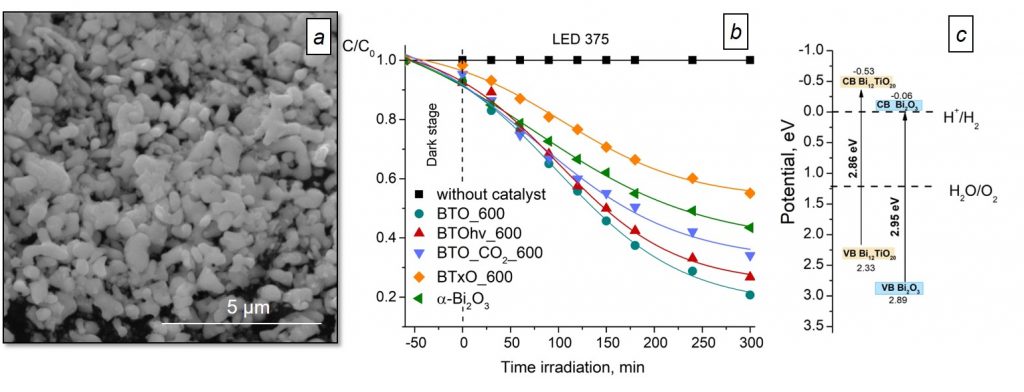
SEM image of the Bi12TiO20 surface prepared via laser synthesis (a). Kinetic curves of the photodecomposition of the model dye Rhodamine B (b), calculated position of the α-Bi2O3 and Bi12TiO20 energy bands forming a type II heterostructure (c).
Thematic issue “Electromagnetic Field and Materials (Fundamental Physical Research)”
Spintronics is one of the most actively developing scientific fields. In particular, problems related to the study of the features of the distribution of micromagnetic structures in spintronic elements, as well as questions of their change under the influence of various external factors, come to the fore. The solution of this problem is complicated primarily by the fact that the micromagnetic structures described above can be very diverse depending on the parameters of the films used, including complex structures such as Bloch dots, domains, and so on. In this regard, the creation of efficient models that could correctly describe the magnetization reversal of such films is extremely important for the development of spintronics.
A notable progress in terms of the magnitude of the magnetoresistive effect has been the development of structures with a giant magnetoresistive (GMR) effect, where the magnitude of the effect in certain configurations can exceed 100 %. This gives a significant advantage over elements based on the anisotropic magnetoresistive (AMR) effect, where the magnitude of the effect does not exceed 5 %. To effectively simulate the dependence of the resistance value of a spin-tunneling (STMR) element of spintronics, it is necessary to understand exactly how the magnetization reversal of the free CoFeB layer of this element occurs, the structure of which is schematically shown in Fig. a. The article was devoted to this modeling.
The simplest approach to study the magnetization reversal of the free layer of an element is to use the coherent remagnetization model, that is, the use of the Stoner-Wohlfarth model. In this case, it is considered that complex micromagnetic and domain structures are practically absent in the free layer. However, a numerical calculation using this approach gave a result (Fig. b), which generally corresponded to the experiment, but there were also noticeable discrepancies. To explain these discrepancies, it was assumed that the magnetization reversal of the free layer occurs with the formation of domains. Accounting for this circumstance made it possible to obtain a better agreement with the experimental results (Fig. c). The work was carried out at the Scientific-Manufacturing Complex “Technological Centre» in collaboration with the Department of General Physics, Faculty of Physics, Lomonosov Moscow State University.

Sketch of the spin-tunnel element (a). Dependences of the change in the GMR resistance R of the STMR element on the magnitude of the external magnetic field. The dotted lines show the experimental dependences, the solid lines show the theoretical ones: within the framework of the Stoner–Wohlfahrt model (b), within the framework of the incoherent magnetization reversal model (c).
Thematic issue “Nuclear physics and physics of elementary particles. Nuclear physics technologies”
In elementary particle physics, reactions are considered in which virtual states of particles that do not lie on the mass surface of these reactions appear as intermediate states. A typical example of such a reaction is the reaction of Compton scattering of photons on free electrons. Similar processes are also known in nuclear physics. These include the double β and two-proton decays of atomic nuclei, the theories of which are based on virtual two-stage mechanisms, when virtual states of intermediate nuclei that do not lie on the mass surface of these decays arise at the first stage, during the decay of which real states of finite nuclei arise at the second stage. In this regard, there is a need to introduce intermediate nuclei into the chains of radioactive decays in the general case, which are not only in real, but also in virtual states and describe them using the Feynman diagram technique. The development of this theory by a group of employees of the Department of Nuclear Physics of Voronezh State University allowed us to study the characteristics of ternary and quaternary fission of atomic nuclei as multi-stage virtual processes.
In this article, formulae are obtained for calculating the yields of light particles of ternary and quaternary fission of nuclei based on the idea of the occurrence of intermediate nuclei formed after the emission of light particles in virtual states. Thus, in the ternary fission of nuclei, part of the energy of the emitted long-range α-particle is taken by reducing the heat of fission of the intermediate nucleus (A – 4, Z – 2), which translates the intermediate nucleus into a virtual state. Based on the obtained formulae, the yields of α-particles in the ternary spontaneous fission of 248Cm and 252Cf nuclei and in the induced fission of 234U and 236U nuclei by thermal neutrons are estimated, which is consistent with experimental values. The yields of α-particles in the quaternary spontaneous fission of 248Cm and 252Cf nuclei and in the induced fission of 234U and 236U nuclei by thermal neutrons require a more correct calculation, considering the different probabilities of the formation of the first and second α-particles in the neck of the fissile nucleus and differences in the permeability factors of the Coulomb barrier for these particles. It is interesting to calculate the yields of ternary and quaternary low-energy nuclear fission using the interaction potential of two deformed axially symmetric fission prefragments, as well as to consider other light particles of ternary and quaternary fission, such as tritons, as well as heavier than α-particles, nuclei in ternary fission.
The research was performed at the Department of Nuclear Physics of Voronezh State University. Research direction: low-energy ternary and quaternary fission of atomic nuclei with the emission of light charged particles.

Diagram of induced quaternary fission of the nucleus, accompanied by the emission of two light charged particles (left). Feynman diagram of induced quaternary fission of the nucleus with the sequential emission of two α-particles from the neck of the fissile nucleus and the scission of the intermediate nucleus formed after their emission into fission fragments (right).
Thematic issue “Luminescence and Laser Physics”
The current interest to solid-state matrices based of HfO2 is due to the prospects in the manufacturing of radiation-resistant and optically active coatings, the production of CMOS-transistor gates, and in development of the new generation nanoelectronics components. Due to its high density and large atomic mass, nanostructured hafnia is also used as modern scintillation media doped with various rare earth ions. To use hafnium dioxide in these high-tech areas we must study its electronic structure features, as well as the formation mechanisms of optical and luminescent properties. Nowadays, there are not enough experimental works where the optical characteristics of hafnia single crystal in the monoclinic phase — the most stable under normal conditions — have been estimated. Moreover, research of such objects will make it possible to consider the contribution of morphological features in the evolution of their electronic and optical properties.
In the paper, we analyze the features of the intrinsic absorption edge formation in a hafnium dioxide nanopowder (99.9%) with the monoclinic structure. We found that indirect allowed optical transitions dominate in the region hν < 5.68 eV; in the range 5.68 eV < hν < 5.76 eV the optical absorption spectrum is formed by both direct and indirect transitions, while mainly direct allowed transitions are observed at hν > 5.76 eV. The calculated energy gap values of 5.31 eV (for indirect transitions) and 5.61 eV (for direct transitions) are in good agreement with independent estimates for monoclinic hafnia structures with various morphology.
The research was carried out at Scientific and Educational Centre “Nanomaterials and Nanotechnologies” of the Ural Federal University. The research fields are luminescent, electrophysical and radiation-optical properties of wide-gap oxide and nitride materials with nanoscale morphological features.
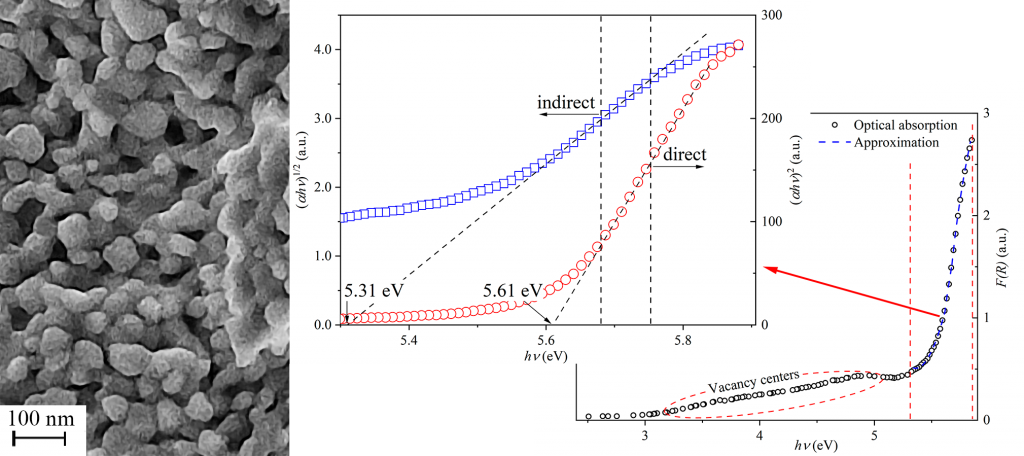
The studied hafnia powder (left). Optical absorption spectrum (right, symbols) is approximated assuming simultaneous indirect and direct allowed transitions (blue dash line). The intrinsic absorption edge is plotted in Tauc coordinates for indirect and direct optical transitions (middle).
Thematic issue “Coherent, Nonlinear and Quantum Optics”
Terahertz (THz) radiation is very promising for the development of methods for studying objects using it, since it is in this region of the spectrum that all high-molecular compounds, in particular, proteins that make up our bodies, have unique absorption lines in. In addition, THz radiation, since it is not ionizing, is in demand in biomedical applications. This stimulates the development of both detection methods and methods for generating radiation in the THz frequency range. Among the variety of methods developed for now for creating such radiation, the nonlinear optical methods for generating THz radiation are standing out. The main advantages of the sources based on nonlinear optical methods are their compactness, as well as the ability to control the properties of the generated radiation over a wide range.
Nowadays, one of the topical areas of research in this area is increasing the efficiency of generation of THz radiation. This work is devoted to the description of one of the methods for controlling the parameters of the generated THz radiation (efficiency, angular-frequency spectrum). It is based on the effect of quasi-phase matching, which has proven itself to control the efficiency of THz radiation generation in crystals, and is also actively used to increase the efficiency of high-order harmonic generation (HHG) in gas and plasma media. Due to the common nature of the effects of HHG and THz radiation, the idea of extending this method to the case of generation of THz radiation in gaseous media interacting with multi-color laser fields was successfully implemented in this work for the first time.
Angular-frequency spectra of THz radiation calculated for a set of argon gas jets separated by vacuum gaps and interacting with a two-color laser field formed by the first and second harmonics of the Ti:Sa laser are presented. The calculation results showed that the width of the gas jets is an effective control parameter that makes it possible to significantly modify the angular-frequency spectrum of the generated THz radiation.
The calculations were performed within the framework of a unique non-perturbative theoretical approach, which makes it possible to calculate the spectra of radiation generated by single atoms, as well as an interference model, which makes it possible, using the parameters of radiation generated by single atoms, to calculate the response characteristics of the medium. The calculation method used is free from phenomenological parameters describing the nonlinearities of the medium.
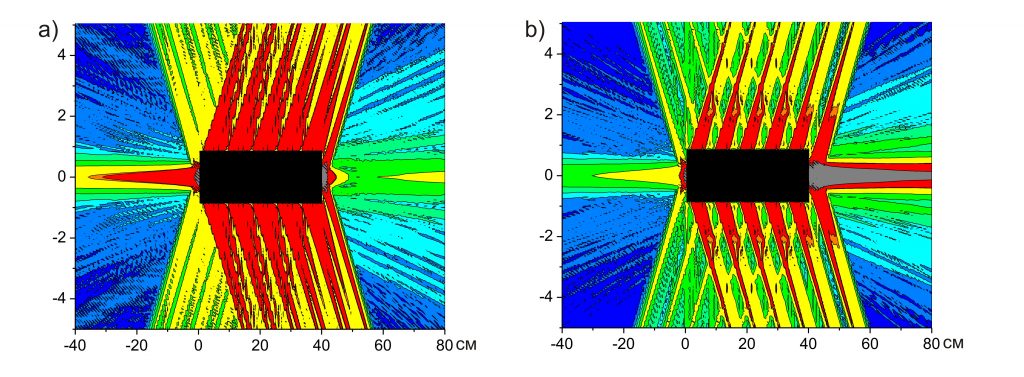
Spatial distribution of radiation at a frequency of 11 THz generated by 20 gas jets 1 cm wide each (a) and 5 gas jets 4 cm wide each (b)
Thematic issue “Nanotechnology for Science and Technology”
The evolution of the modern laser optics leads to expansion of the tasks where it is necessary to correct a distorted wavefront and optimize the distribution of radiation at the lens focus. For such purposes, adaptive optical systems are used, the main actuating element of which is wavefront correctors (deformable mirrors). Today, there are very reliable deformable mirrors with dimensions from 30 to 400 mm, which have shown high efficiency in their use in high-power lasers to correct wavefront aberrations and improve the quality of radiation focusing. From this point of view, the bimorph deformable mirrors are widely used. The advantage of bimorph correctors is the ability to reproduce large-scale wavefront aberrations with high accuracy using a small number of control electrodes. Nevertheless, in several scientific and technological problems of transmitting high-power laser radiation through a turbulent atmosphere, it becomes necessary to use correctors with an aperture of less than 30 mm and a high density of control elements to compensate for rapidly changing small-scale phase fluctuations.
To create small-aperture bimorph mirrors, nanotechnological methods can be used, such as: laser ablation to place the grid of control electrodes to the surface of the piezoceramic disk and microwelding to create a reliable electrical contact between the copper wire and the silver coating of the piezoelectric disk. The main welding methods are thermocompression, ultrasonic and split-tip welding. The use of thermocompression welding for the tasks of creating piezoelectric wavefront correctors is impossible due to the occurrence of high local temperatures (up to 650 °C), which can lead to depolarization of the piezodisk and failure of the deformable mirror. The criterion for the use of ultrasonic and contact split-tip microwelding with a split electrode is the parameter of the tensile strength. In the case of ultrasound application value of the tensile strength is less in comparison with the split-tip welding method (0.2–0.25 N versus 0.45–0.5 N).

Bimorph deformable mirror with high spatial resolution of control elements: а) design of the bimorph deformable mirror in the housing, b) scheme of the laser ablation setup, c) scheme of the split-tip microwelding technique.
Thematic issue “Ion — Surface Interaction”
Magnetic films, in which the axis of magnetic anisotropy is directed at an angle to the surface, are of considerable interest for improving the technology of recording information on a hard disk. However, thin films deposited by standard methods in vacuum have easy axis oriented within film surface. To get perpendicular to film surface component of magnetization it is necessary to considerable change its structure. A promising method for the formation of films with special properties is their nanostructuring during growth. One of the well-known technological methods that make it possible to ensure the growth of nanostructures is oblique angle deposition. This method of obtaining films has attracted considerable interest in recent years. It has been understood that the reason for the nanostructuring of films under conditions of oblique deposition is the shadowing effect. The aim of this work was to find the optimal conditions for the nanostructuring of Co films on a silicon substrate under conditions of oblique deposition and formation of arrays of nanocolumns with a high aspect ratio. Such nanocolumns should provide the necessary properties of the magnetic anisotropy of the film and the orientation of the easy axis at an angle to the substrate.
In this work, experiments on the deposition of cobalt films on an inclined substrate were carried out on an Oratoriya-9 electron-beam evaporation setup. As a result of the experiments, it was found that at large angles of inclination of the substrate (more than 70°), nanostructuring of the cobalt film occurs. The optimal conditions for nanostructuring are achieved at a substrate inclination angle of 85°. Under these conditions, an inclined fibrous structure with transverse fiber sizes up to 30 nm is formed. In this case, the easy axis is oriented along the axis of the nanofibers, thereby ensuring the inclination of the magnetization vector to the film surface. This morphology can be promising for application as a medium for high-density magnetic recording of information.
This work was carried out using the equipment of the Center for the Collective Use “Diagnostics of Micro- and Nanostructures” of the Valiev Institute of Physics and Technology of the Russian Academy of Sciences.

Scheme of the experiment for oblique angle deposition of thin films (on the left). Images of a cross section of a Co film deposited at an angle of 85° and a top view of its surface obtained by scanning electron microscopy (Supra 40).
Thematic issue “New in Magnetism and Magnetic Materials”
Two-dimensional carbon structures exhibit many unique properties that do not have a clear justification within the framework of existing theories. In the early 2000-s, there were works showing that graphene can also have magnetic properties. Experimental data show that single-layer graphene films can exhibit weak ferromagnetism at room temperatures. At the same time, it is not thoroughly known by what mechanism the demagnetization is carried out: due to defects in the carbon rings of surface groups or complex chemical processes occurring over the entire surface of the structure.
This work is devoted to a comprehensive study of the optical and magneto-optical properties of α-Fe2O3/rGO nanostructures synthesized from commercial reduced graphene oxide (Sigma Aldrich) connected to α-Fe2O3 hematite nanodiscs in two different ways. Sample 1 forms a “core–shell” structure, where about a hundred hematite nanoparticles participate as a “core”, surrounded by graphene layers, while in sample 2 hematite particles are uniformly mixed with graphene layers.
Because the samples obtained are quite transparent in the visible part of the spectrum, the magnetic circular dichroism (MCD) spectroscopy method was used to study the interaction between the core and the shell. The work was carried out at the ITMO National Research University (St. Petersburg) together with the Kirensky Institute of Physics SB RAS, FRC KSC SB RAS (Krasnoyarsk).
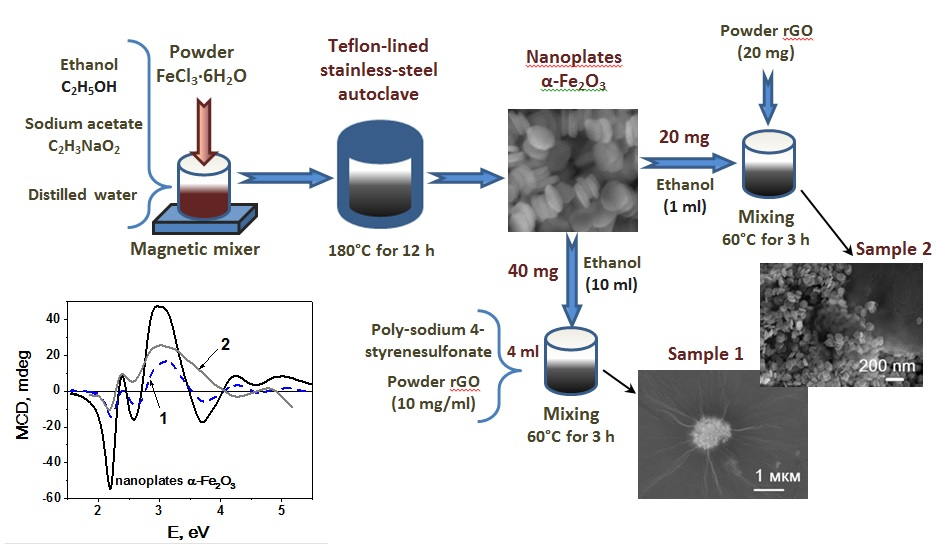
Graphical scheme for obtaining α-Fe2O3/rGO nanostructures and MCD spectra for initial hematite nanoparticles and samples 1 and 2 at room temperature and a magnetic field of 1.5 T.
Thematic issue “New Materials and Technologies for Security Systems”
Measurements of the differential spectrum of X-ray and gamma radiation are mainly carried out to control the content of radionuclides in the environment. The radionuclides are identified by their spectral emission lines. From the atmosphere to the ground also comes gamma radiation, which occurs when cosmic rays interact with the nuclei of air atoms. This radiation has a continuous spectrum without any lines and is background radiation. During the monitoring of secondary cosmic rays, we discovered a new phenomenon: an increase in background gamma radiation during precipitation (see fig. a). It has been found out that increases are observed throughout the year with any precipitation (snow, rain, deep fog). The amplitude of the increase averages 30%, and in some cases can reach 100%. The placement of a gamma detector on a ship during a marine expedition showed that increases during precipitation also occur at sea. Together with the radiological laboratory, it was found that no significant concentrations of radionuclides were observed in rainwater. Parallel measurements on other detectors have shown that increases occur only in gamma radiation, not showing up in the charged component (see fig. a). This is the most intriguing feature of the phenomenon. The continuous emission spectrum indicates that it is generated by bremsstrahlung when high energy charged particles move in the atmosphere. Long-term observations have shown that the maximum increase occurs approximately half an hour after the maximum intensity of precipitation.
In this paper, the influence of solar activity on the increase in background gamma radiation during precipitation was studied. It is known that cosmic rays are modulated by solar activity with a period of 11 years. If the increases are associated with cosmic rays, some manifestation of solar activity should be expected. Series of data for years 2010-2021 were analyzed, and the influence of solar activity was found: with a decrease in the flux of cosmic rays, a decrease in the frequency and amplitude of increases occurs (see fig. b).
The study is important on the next reason. Gamma radiation ionizes the air, which leads to an increase in the number of water vapor condensation centers, i.e. affects the formation of clouds. The phenomenon is global in nature, which means it affects on the climate.

Concentration dependences of Raman scattering intensity (a) and color (b) of blood plasma samples with different titers of influenza A virus: in 0.1% human blood plasma (squares) compared with the virus in the buffer (circles) and influenza B virus in 0.1% blood plasma (stars). The SERS signal was received from an aptamer labeled with BDP FL dye.
Thematic issue “Physics of Auroral Phenomena”
Measurements of the differential spectrum of X-ray and gamma radiation are mainly carried out to control the content of radionuclides in the environment. The radionuclides are identified by their spectral emission lines. From the atmosphere to the ground also comes gamma radiation, which occurs when cosmic rays interact with the nuclei of air atoms. This radiation has a continuous spectrum without any lines and is background radiation. During the monitoring of secondary cosmic rays, we discovered a new phenomenon: an increase in background gamma radiation during precipitation (see fig. a). It has been found out that increases are observed throughout the year with any precipitation (snow, rain, deep fog). The amplitude of the increase averages 30%, and in some cases can reach 100%. The placement of a gamma detector on a ship during a marine expedition showed that increases during precipitation also occur at sea. Together with the radiological laboratory, it was found that no significant concentrations of radionuclides were observed in rainwater. Parallel measurements on other detectors have shown that increases occur only in gamma radiation, not showing up in the charged component (see fig. a). This is the most intriguing feature of the phenomenon. The continuous emission spectrum indicates that it is generated by bremsstrahlung when high energy charged particles move in the atmosphere. Long-term observations have shown that the maximum increase occurs approximately half an hour after the maximum intensity of precipitation.
In this paper, the influence of solar activity on the increase in background gamma radiation during precipitation was studied. It is known that cosmic rays are modulated by solar activity with a period of 11 years. If the increases are associated with cosmic rays, some manifestation of solar activity should be expected. Series of data for years 2010-2021 were analyzed, and the influence of solar activity was found: with a decrease in the flux of cosmic rays, a decrease in the frequency and amplitude of increases occurs (see fig. b).
The study is important on the next reason. Gamma radiation ionizes the air, which leads to an increase in the number of water vapor condensation centers, i.e. affects the formation of clouds. The phenomenon is global in nature, which means it affects on the climate.
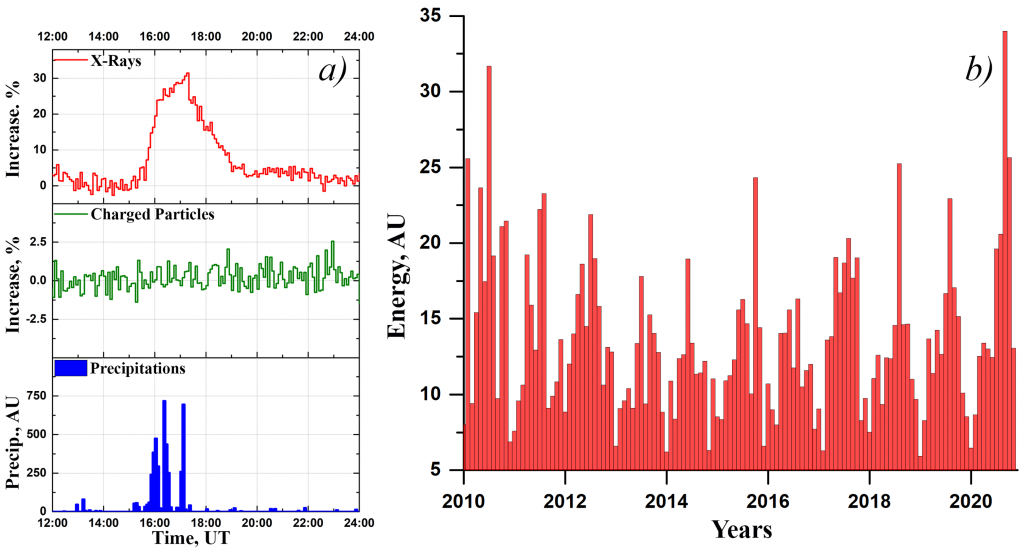
An example of a recent event 26.05.2022 (a). The total energy of gamma radiation released during the increases. Minimum solar activity in 2010 and 2020, maximum in 2013-2016. Seasonal variations are also clearly visible (b).
Thematic issue “Physics of Condensed Matter”
Modern trends in studies of magnetism include a shift of fundamental interest from bulk samples to nanosized structures made of ultrathin magnetic films. In low-dimension systems of this type, the role of superficial effects and processes that occur at interfaces increases. These processes define such properties of nanosized devices as giant magnetoresistance (GMR) and tunnel magnetoresistance (TMR). Magnetic structures with GMR and TMR effects are widely applied in magnetic field sensors, the read heads of hard-disk drives, and magneto-resistive nonvolatile memory.
The creation of spin-valve systems, which consist of magnetic layers divided by nonmagnetic metal layers, is a great improvement in the development of structures with GMR effect. However, the direction of magnetization for one ferromagnetic layer is fixed by its interaction with an additional antiferromagnetic layer. An advantage of the spin-valve structures are small values of the saturation fields (5–50 Oe) that makes their technical applications quite promising. At present time, a variety of more complicated spin-valve structures have been designed that contain a three-layered antiferromagnetic system in addition to simple valve structure that magnifies the effect of antiferromagnetic layer on a freely magnetizing ferromagnetic layer.
At the paper, it was realized the Monte Carlo simulation of the magnetic properties of such a complicated spin-valve structure using anisotropic Heisenberg model, considering magnetization both in the film plane and perpendicular to the film plane. The dependence of the magnetic characteristics of the films on temperature and external magnetic field was obtained. The influence of the magnetic anisotropy, magnetic film thickness, temperature, and intra- and interlayer exchange interaction on the hysteresis effects was investigated. Factors were revealed that facilitated the stable giant magnetoresistance effect in the structures. Measured dependences of the magnetic characteristics of the films and spin-valve structures are in a good agreement with experimental data. The work was carried out in Theoretical Physics Department of Dostoevsky Omsk State University (research fields of phase transitions, critical phenomena, and simulation of magnetic nanostructures).

Model of a complicated spin-valve structure (on the left). Hysteresis loops in spin-valve structures with different types of anisotropy and film thicknesses of N1=N2=N3= 5 ML at temperature T = 1.0 J1/kB. Normal magnetization: data for individual layers (a) and throughout the structure (b) are shown. Dashed lines in panels (a) and (b) show calculations for reduced intralayer exchange coupling in the second film with J02 = 0.5.
Thematic issue “Wave Phenomena: Physics and Applications”
Acoustic location of the environment is widely used in various fields of human activity, and for some representatives of the natural word it is completely indispensable. For example, bats use acoustic waves to move safely in conditions of poor visibility, to detect various distant objects. The simplest in terms of engineering implementation is the echolocation method, in which the environment is sounded with pulses of a special form, after which the signal, reflected from a stationary or moving obstacle, is recorded by the receiving system. The standard (double) correlation between the emitted and received signals makes it possible to identify the presence of an obstruction, as well as to estimate different characteristics of the object off which the signal was reflected, for example, the distance to it, or its speed. In this paper, we have demonstrated the possibility of using triple correlation in problems of acoustic location, which can improve the noise immunity of estimates, for example, in the case of multipath signal propagation, which is useful in the presence of cloaking scatterers, as well as in problems of estimating the trajectory of a moving scatterer.
The usage of triple correlation, or its frequency counterpart “bispectrum”, has long been proven in the analysis of signals in optics, cosmology, and oceanology. However, this approach has not been widely used in acoustic location problems. One of the reasons is related to the fact that for these purposes it was necessary to develop a special signal, the triple autocorrelation function of which is close to delta function. As a possible solution to this problem, in this work it is proposed to use a random sequence of numbers corresponding in the complex representation to the values of the cube root of unity. The triple correlation function of such a signal is close to the delta function, as it is desired. The existing positive experience of using triple correlation in various fields of physics, together with the results of numerical and laboratory experiments presented in this work, opens the broad prospects of the considered approach in acoustic location problems.
The work was carried out by the staff and graduate students of Acoustics Department, Faculty of Physics, Moscow State University, P. P. Shirshov Institute of Oceanology, RAS, The Schmidt Institute of Physics of the Earth, RAS, working in the field of acoustics of natural environments in the direction of the development of multidimensional methods for processing signals and fields.
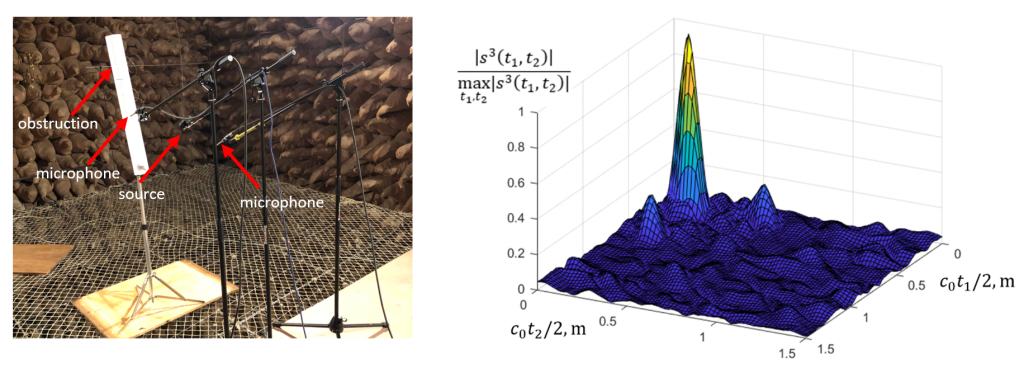
2021
Thematic issue “Nanooptics photonics and coherent spectroscopy”
The synthesis and research of new metamaterials is an interesting task in science and technology. Different topologies of surfaces, their structural features, optical and spectral properties make such materials unique in their class. Among such materials, metasurfaces for SERS spectroscopy, which are widely used in medicine and supersensitive sensors, are especially distinguished. Today there are various methods of synthesis of SERS active metasurfaces: from simple colloidal solutions to nanostructures with controlled geometry. Among them there is the method of template synthesis based on polymer track etched membranes. It makes it possible to produce metasurfaces with controlled geometry nanowires as well as dendritic nanostructures. Since the surface of such metasurfaces is highly developed and hydrophilic, the applied substance on such surfaces can spread over a large area. This becomes a problem when assessing the enhancement factor of such metasurfaces, when one needs to know from what amount of analyte under study the SERS spectra are obtained.
The work examined SERS active substrates with dendritic nanostructures fabricated by the template synthesis method. By varying the parameters of the synthesis, the surfaces with dendritic nanostructures of different sizes were produced. This changed the wettability parameters of such substrates. To evaluate these properties, depending on the synthesis parameters, an optical (luminescent) diagnostic method was used. The essence of the method is to observe luminescent images of samples as a solution of semiconductor quantum dots (a solution of CdSe/CdS/ZnS QDs in toluene) spreads over the substrate surface. After drying of the solvent, when the substrate with luminescent quantum dots is illuminated with the appropriate laser radiation, it is possible to observe the spreading area in the scheme of a confocal epi-luminescent microscope, estimate the wetting area, and study the structural features of the surface of the samples under study.
The study was carried out by a team that is part of the Inter-Institute Scientific Group on Laser Selective Spectroscopy and Nanoscopy. Works on the template electrochemical synthesis of nanostructured metasurfaces and the study of their optical properties are carried out at the Moscow State Pedagogical University in cooperation with the Federal Research Center “Crystallography and Photonics” of the Russian Academy of Sciences. Numerical simulation of local fields near nanostructures was carried out in cooperation with the Moscow Polytechnic University. Experimental studies of metasurfaces by luminescence microscopy were carried out in the Laboratory of Electronic Spectra of Molecules of the Institute of Spectroscopy of the Russian Academy of Sciences. The technique of SERS-spectroscopy and sensorics is being developed within the framework of the state task of the Lebedev Physical Institute RAS at the Troitsk Branch of LPI.
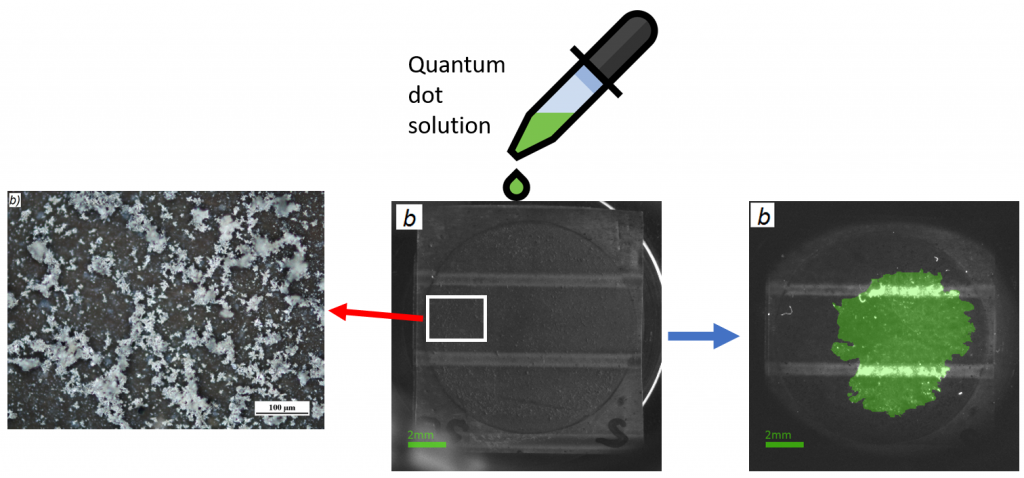
Thematic issue “Physics of Cosmic Rays”
An experiment studying the variations of cosmic rays during thunderstorms at the Baksan Neutrino Observatory (BNO) two decades ago has resulted in discoveries of some processes important for understanding the dynamics of thunderstorms and the role of cosmic rays in it. At the present time new data channels are added to the original observations of variations of the soft (electrons, positrons, and gamma rays) and hard (muons) components of secondary cosmic rays and their correlations with near-ground electric field. Now the magnetic and seismic data are analyzed, and remote video cameras observe the sky above the BNO from distances of 1 km and 75 km during night-time thunderstorms. A method of estimating the stratosphere electric field has beendeveloped, based on the analysis of disturbances of muon flux on the ground level (The Carpet air shower array at an altitude of 1700 m a.s.l.). Joint analysis of all these data allowed us to discover some peculiar phenomena in ordinary thunderstorms, including high-altitude discharges of a new type that produce glow in the upper atmosphere. The unique property of the event described in the present paper is the complete absence of usual thunderstorm activity: one can see stars on video frames (there are no thunderclouds), and the surface electric field meter indicates near-background values (fair weather field). Nevertheless, the electric field in the troposphere over the mountains, reconstructed from muon intensity data, is quite considerable, and large-scale glow is observed, invisible by eye but recorded by video cameras (panel a in Figure shows brightness of sky glow in arbitrary units). Some seismic activity preceded the glow (data of the inclinometer in panel e in Figure, where 1 V corresponds to 5 arc seconds), and the entire event occurred on the background of a magnetic storm on August 31, 2019 (magnetic indices SYM-D and SYM-H in panels b and c). Also, a significant local disturbance of the delay of GPS accurate time radio signal was detected for the first time (panel d). This disturbance corresponds to three-time increase of the total electron content (TEC) of the ionosphere, and it began immediately after a fast disturbance of the muon intensity (corresponding potential difference deduced from muon variations is shown in panel f). An interpretation of this unusual event is suggested in the paper, according to which the underground horizontal pulsed electrical discharge took place. The fact of detection of a series of successive geophysical disturbances finally resulting in compensation of the atmospheric current generated by vibration of the Earth’s crust in the region of potentially active volcano (Elbrus) by interhemispheric current indicates to a mechanism of energy-exchange interaction between two systems, the solar wind and the inner structures of the Earth.
The team of authors includes the staff members of the Institute for Nuclear Research of the Russian Academy of Sciences (RAS) and of the Baksan Neutrino Observatory of this Institute, and a collaborator from the Pushkov Institute of Terrestrial Magnetism, Ionosphere and Radio Wave Propagation of RAS. The data of high-precision inclinometers of Laboratory No. 1 of the North Caucasus Geophysical Observatory of Shmidt Institute of Physics of the Earth of RAS were used.

Thematic issue “Electromagnetic Field and Materials (Fundamental Physical Researches)”
As is known, a magnon crystal (MC) is an artificially created periodic structure in a magnetically ordered medium. If the energy of a periodic perturbation of the medium is small compared to the total magnetic energy of the medium, then such an MC is usually called low-contrast MC. For example, such a crystal appears if a ferrite film is magnetized by an external uniform magnetic field, to which a small stationary spatially periodic magnetic field is added.
If a superdirected beam (which has no diffraction divergence) of a surface spin wave (SSW) is directed at a low-contrast MC, then as a result of its diffraction through the MC, the initial beam splits into narrow diffractive beams, so-called doublers of zero and first order beams diffraction. Since the beam incident on the MC is superdirectional, then all the appearing doubler beams also have this property (despite the fact that they are much narrower than the original beam) and are characterized by low diffraction divergence: as can be seen from the figure, they practically do not spread over propagation in both experimental and calculated diffraction patterns. In addition, as can be seen from the figure, the interaction of the SSW beam with the MC is accompanied by a displacement of the initial beam and a significant broadening of the film region, in which the doubler beams of the zero and first diffraction orders are located. Note that the calculations that were also performed for the MC region show how the SSW beam diffracts inside the MC.
Experimental visualized patterns describing the diffraction of SSW through MC were obtained by microwave probing on a unique experimental setup developed by the authors of the article. In contrast to setups that use Brillouin light scattering to obtain SSW diffraction patterns, the created setup makes it possible to obtain such patterns on a surface with area of ~ 40 cm2. The setup includes a measurer of complex transmission coefficient, a computer, a permanent magnet, and movable transducer probes, which can be used to excite spin wave beams with various parameters in the structure under study, receive these beams and measure their characteristics. Thus, the setup makes it possible to study the distribution of the amplitude and phase of spin waves in the plane of various ferrite structures. Numerical calculations corresponding to the experimental diffraction patterns (see figure below) were carried out using micromagnetic modeling based on the MUMAX3 software package by the finite difference method based on the Landau-Lifshitz equation with a dissipative term in the form proposed by Hilbert. Experimental (a) and calculated (b) diffraction patterns in the plane of the structure, describing the distribution of the amplitude of the SSW with a frequency of 3056 MHz during its propagation through a low-contrast MC are shown in Figure, where 1 – is SSW-exciting linear transducer 5 mm long, 2 and 3 – are nominal boundaries of the superdirectional SSW beam when there is no MC, 4, and 5 – are MC boundaries.
The team of authors includes leading specialists in the study of spin waves from the Saratov State University (SSU) and Kotelnikov Institute of Radio Engineering and Electronics (Fryazino Branch) of Russian Academy of Sciences, who performed, respectively, numerical calculations and experiments in this work. Mention must be made, that one of the authors of the work is a 4th year student from SSU.
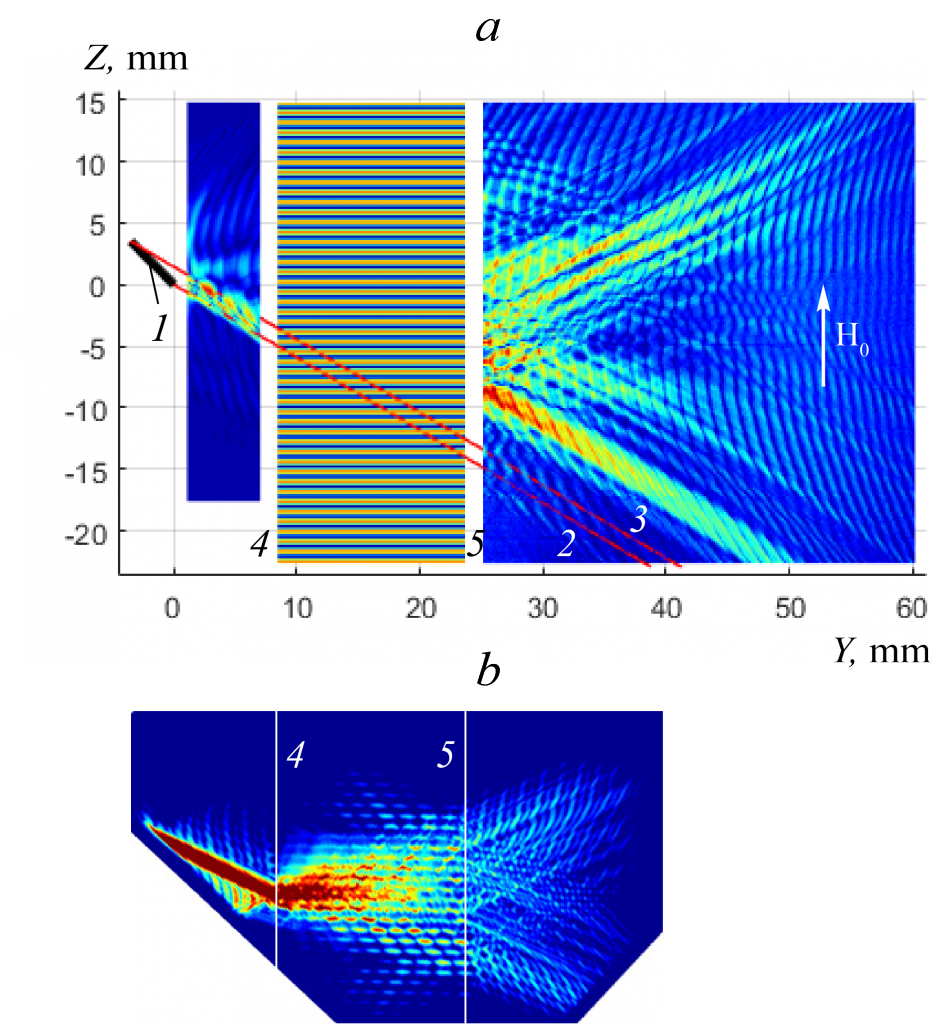
Thematic issue “Nuclear Physics and Elementary Particle Physics. Nuclear Physics Technologies”
Nowaday the fission process of pre-actinide nuclei is of great scientific interest. It is well-known that these nuclei fission mainly symmetrically even at low excitation energies. However, in recent investigations of fission properties of neutron-deficient isotope 180Hg at the excitation energy of about 10 MeV, asymmetric mass distribution of fission fragments was observed. It is contradictory to the expected symmetric one, influenced by neutron shell N=50. This discrepancy caused intensive studies of the fission process of nuclei from this region.
Detailed investigations of fission of the compound nuclei 180, 190Hg, formed in the reactions 36Ar+144, 154Sm, showed that the mass distributions of the fragments are the superpositions of the symmetric and asymmetric modes. The most probable mass numbers of the light and heavy fragments for asymmetric mode are 80/100 and 83/107 a.m.u. for 180Hg and 190Hg, respectively. Supposing unchanged charge density approach, the masses of light and heavy fragments correspond to the same proton numbers Z1/Z2=35/45 for both compound nuclei, whereas the neutron numbers change according to the compound nucleus mass numbers. Due to this one can suppose that the properties of the asymmetric fission are mainly determined by the proton configurations. With increasing excitation energy of the fissioning nucleus the growth of the symmetric mode associated with the liquid-drop component is observed, whereas the contribution of the asymmetric part decreases.
The reaction 68Zn+112Sn leads to the formation of the same 180Hg nucleus, as in the reaction 36Ar+144Sm. But experimentally measured mass-energy distributions of the reaction products drastically change, despite that the excitation energies of the compound systems are very close to each other: 48 and 53 MeV, respectively (see the Figure). This discrepancy in the reaction fragments distributions connected with the quasifission process in more symmetric system 68Zn+112Sn. This is also interesting and surprising observation, because the quasifission process seemed to be insignificant in the interactions of such not so heavy nuclei.
The experiments were carried out with use of the double-arm time-of-flight spectrometer CORSET at the U-400 cyclotron in Flerov Laboratory of Nuclear Reactions of Joint Institute for Nuclear Research and at the K-130 cyclotron of the Accelerator Laboratory of Physics Department of the University of Jyväskylä (Finland). This work was supported by the Russian Foundation for Basic Research (project no. 19-52-45023).

Thematic issue “Phase Transition & New Materials”
Titanium trisulfide (TiS3) – one of the representatives of trichalcogenides, a material with great potential for field-effect transistors, photodetectors, and power generators. Studies of TiS3 single crystals in different scientific groups have shown that their resistivity at room temperature can differ by more than 10 times. It was assumed that an increase in the conductivity of TiS3 crystals can be associated with a violation of the stoichiometry of the composition, in connection with which it can be assumed that the conductivity depends on the density of sulfur vacancies.
The method of high-resolution transmission scanning electron microscopy with registration of electrons scattered at high angles (10-15°, in comparison with Bragg scattering, in which electrons are scattered at angles of 3-5°) using a high-angle ring dark-field detector allows one to obtain contrast from columns of atoms depending on the atomic number Z to the power γ (γ = 1.6-2) and on the number of atoms in a chain parallel to the e-beam. Using such images, it is possible to assume the presence of vacancies, try to estimate their number in the column and to determine the density of vacancies in the sample.
In this work, we simulated the images of TiS3 single crystals with different numbers of sulfur vacancies in chains parallel to the e-beam for different sample thicknesses. An easy and fast method was proposed for estimating the number of vacancies in a chain from the intensity of images of atomic columns. The results showed that the used method differs insignificantly from the known method for estimating the number of atoms by approximation by Gaussians, and the scatter of data can be associated with the position of vacancies in the chain of sulfur atoms parallel to the electron beam. The calculations made it possible to estimate the density of vacancies in low-resistance and high-resistance samples and to confirm the hypothesis about the influence of vacancies of sulfur atoms on the conductivity. In addition, the ordering of vacancies in low-resistance TiS3 samples was found.
The team of authors includes leading specialists of the Federal Research Center “Crystallography and Photonics of the Russian Academy of Sciences”, National Research Center “Kurchatov Institute”, Kotelnikov Institute of Radio Engineering and Electronics Russian Academy of Sciences working in the field of condensed matter physics and structural methods in materials science. The theory of using a unique method for evaluating the vacancy structure in crystals has been implemented in the laboratory of electron microscopy of the Federal Research Center “Crystallography and Photonics of the Russian Academy of Sciences”.

Thematic issue “Structure and Dynamics of Molecular Systems”
The ability to calculate simple mechanical characteristics of a crystal is an extremely important property for any theory of the structure of a solid. The presence of such a possibility – provided the consistency of the result obtained – first means some general consistency of the theory: the area of its fundamental applicability in this case can be quite wide, not limited, for example, to the microscopic structure of the crystal, which means that the theory can surpass the status of a highly specialized model. In addition, the ability to calculate the mechanical characteristics of an object can be used to obtain constraints on the values of the parameters appearing in these calculations. The fact is that the mechanical characteristics, although often with rather moderate accuracy, are amenable to direct measurement on samples. If the same characteristics can be expressed – if not analytically, then at least computationally – through the parameters of the theory, then from these expressions ranges of parameter values can be obtained that agree with the measurement results, or at least do not contradict them.
It is shown that the requirement of computability of high-order elastic moduli for an abstract crystal itself leads to rather significant restrictions on how a microscopic theory of its structure, based on modeling the interaction of particles constituting the crystal, can look like. Based on this requirement, the authors construct a criticism of the now widely used approaches to the construction of a theory (the pseudopotential method, calculations from first principles, the electron density functional method, the embedded atom method) and offer a schematic description of how a theory could be constructed based on the model direct accounting for multiparticle interactions. In this paper the restrictions of the theory are obtained on the dependence of the calculated total potential energy of interaction of the particles constituting the crystal on the polynomials determined from symmetric considerations in the radius vectors of the particles constituting bounded and determined by symmetry clusters. Since the result is based only on considerations determined by the symmetry of the crystal structure, the requirements obtained (more precisely, the general scheme for their preparation) can be considered mandatory for the microscopic theory, which claims to be able to describe the mechanical properties of a crystal.
Thematic issue “Electron and probe microscopy, and complementary methods in research of nanostructures and nanomaterials”
Titanium trisulfide (TiS3) – one of the representatives of trichalcogenides, a material with great potential for field-effect transistors, photodetectors, and power generators. Studies of TiS3 single crystals in different scientific groups have shown that their resistivity at room temperature can differ by more than 10 times. It was assumed that an increase in the conductivity of TiS3 crystals can be associated with a violation of the stoichiometry of the composition, in connection with which it can be assumed that the conductivity depends on the density of sulfur vacancies.
The method of high-resolution transmission scanning electron microscopy with registration of electrons scattered at high angles (10-15°, in comparison with Bragg scattering, in which electrons are scattered at angles of 3-5°) using a high-angle ring dark-field detector allows one to obtain contrast from columns of atoms depending on the atomic number Z to the power γ (γ = 1.6-2) and on the number of atoms in a chain parallel to the e-beam. Using such images, it is possible to assume the presence of vacancies, try to estimate their number in the column and to determine the density of vacancies in the sample.
In this work, we simulated the images of TiS3 single crystals with different numbers of sulfur vacancies in chains parallel to the e-beam for different sample thicknesses. An easy and fast method was proposed for estimating the number of vacancies in a chain from the intensity of images of atomic columns. The results showed that the used method differs insignificantly from the known method for estimating the number of atoms by approximation by Gaussians, and the scatter of data can be associated with the position of vacancies in the chain of sulfur atoms parallel to the electron beam. The calculations made it possible to estimate the density of vacancies in low-resistance and high-resistance samples and to confirm the hypothesis about the influence of vacancies of sulfur atoms on the conductivity. In addition, the ordering of vacancies in low-resistance TiS3 samples was found.
The team of authors includes leading specialists of the Federal Research Center “Crystallography and Photonics of the Russian Academy of Sciences”, National Research Center “Kurchatov Institute”, Kotelnikov Institute of Radio Engineering and Electronics Russian Academy of Sciences working in the field of condensed matter physics and structural methods in materials science. The theory of using a unique method for evaluating the vacancy structure in crystals has been implemented in the laboratory of electron microscopy of the Federal Research Center “Crystallography and Photonics of the Russian Academy of Sciences”.

Thematic issue “Structure and Dynamics of Molecular Systems”
The possibility of controlling the physicochemical properties of photosensitive materials using external influences opens broad prospects for their application in various fields of science and technology. Thus, the phenomenon of changes in the optical characteristics of ultrathin films based on photochromic compounds because of aggregation rearrangements can be used in the development of information recording devices and optical signal processing, in holography, medicine, sensorics, etc. It is known that a several spiro compounds exhibit thermally and photoinduced H– and J-aggregation in organic solvents; however, the behavior of Langmuir monolayers from amphiphilic spiropyrans, which are resistant to temperature changes, a high activation barrier of the isomerization reaction, and significant spectral distinguishability of isomers, is practically not studied. This paper devoted to studying the possibility of controlling the aggregation state of Langmuir monolayers of photochromes on liquid substrates by introducing a diluent and varying the surface pressure is of increased interest for scientists working in the field of photochemistry, as well as physical, colloidal, and supramolecular chemistry. It is shown that amphiphilic 1′-hexadecyl-3 ‘, 3′-dimethyl-6-nitro-1′, 3′-dihydrospiro [chromene-2,2’-indole] (SP1) in the spiro form does not form stable monolayers on the aqueous subphase, while the merocyanine form of this compound completely spreads over the surface and forms a true monolayer. It was demonstrated that in the planar state of the studied substance the tendency to aggregation sharply increases, which is confirmed by the appearance and growth of the absorption band in the 620 nm region. The formation of mixed monolayers of SP1 and cetyl alcohol molecules, as well as external mechanical action, makes it possible to control the degree of aggregation of spiropyran in monomolecular films and achieve complete spreading of the compound over the water surface while maintaining the photochromic properties of the substance in the two-dimensional state. The results obtained open broad prospects for the use of compounds of the spiropyran series in molecular electronics and for the creation of nanoscale optically active systems.
The team of authors includes leading specialists from the Mendeleev University of Chemical Technology, Frumkin Institute of Physical Chemistry and Electrochemistry of the Russian Academy of Sciences and the Semenov Federal Research Center of Chemical Physics of the Russian Academy of Sciences. The employees of the last one work in the field of synthesis of optically active and photosensitive compounds, are engaged in their incorporation into polymer matrices. Scientific group from the Mendeleev Chemical Technical University and Frumkin Institute of Physical Chemistry and Electrochemistry RAS is studying the behavior of chromo-, ion- and luminophores at the interface. The cooperation of these scientific groups makes it possible to carry out unique research aimed at studying the laws governing the course of photochemical reactions in two-dimensional ordered systems.
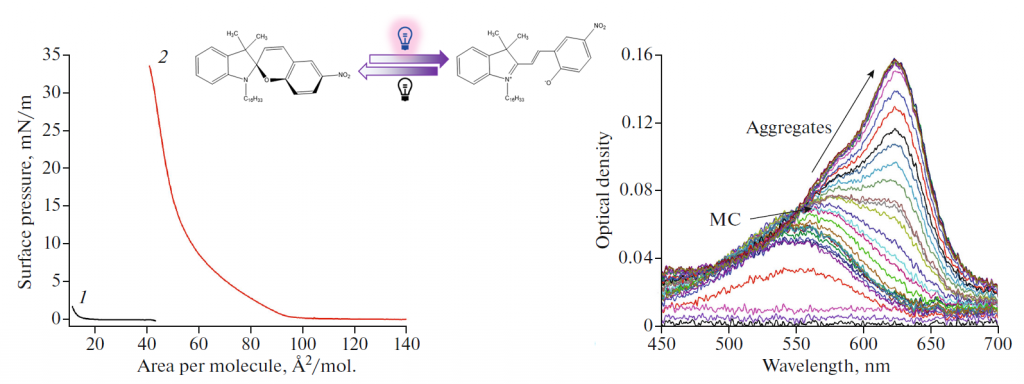
Thematic issue “Phase Transformations and the Strength of Crystals”
Under extreme exposure, i.e. large (megaplastic) deformations (MPD), the transformation of the atomic structure in the crystalline state of materials is realized under conditions of nonequilibrium thermodynamics and the specificity of relaxation processes (especially at low temperatures). This leads to the appearance of unusual structural states with special characteristics of chemical and topological inhomogeneity. It is most difficult to obtain the structural features under the influence of MPD in amorphous alloys, where local inhomogeneities of the atomic structure can arise. Under these conditions, the combined application of the EXAFS and EELFS methods is extremely necessary and effective, allowing one to represent the evolution of transformations of the atomic system both in the bulk and on the surface of the alloys as the MPD value varies.
There is a unique Ti50Ni25Cu25 alloy among functional alloys with shape memory effect which can be obtained in the amorphous state using two different methods of extreme exposure: quenching from the liquid state (QLS) and MPD. We present the results of a detailed structural analysis of this unique material after QLS and MPD. The studies of the local atomic structure of the initial amorphous state obtained by the QLS method and the secondary amorphous state obtained by the MPD were performed using the EXAFS spectroscopy method under synchrotron radiation (shown in the figure) and the EELFS spectroscopy method. Comparison of changes in the local atomic structure of the crystalline Ti50Ni25Cu25 alloy during MPD on the surface of the sample and in the bulk of the sample showed that the volume of the material is gradually amorphous of the crystalline Ti50Ni25Cu25 alloy under study. The local atomic structure of this alloy after MPD (n = 6) reproduces the local atomic structure of the alloy after MPD. In this case, on the surface, the studied alloy after MPD remains, most likely, in a state close to the crystalline state and is noticeably supersaturated with oxygen atoms.
The team of authors includes leading specialists of the Bardin Central Research Institute of Iron and Steel Industry, National Research Center “Kurchatov Institute”, MIREA – Russian Technological University and National Research Technological University “MISiS”, working in the field of physics of large plastic deformations and structural methods for studying amorphous and nanocrystalline materials. The theory and practice of EELFS technique was developed and implemented in the laboratory of surface physics of the Kurdyumov Institute of Metal Science and Physics of Metals, as a part of the Bardin Central Research Institute of Iron and Steel Industry.
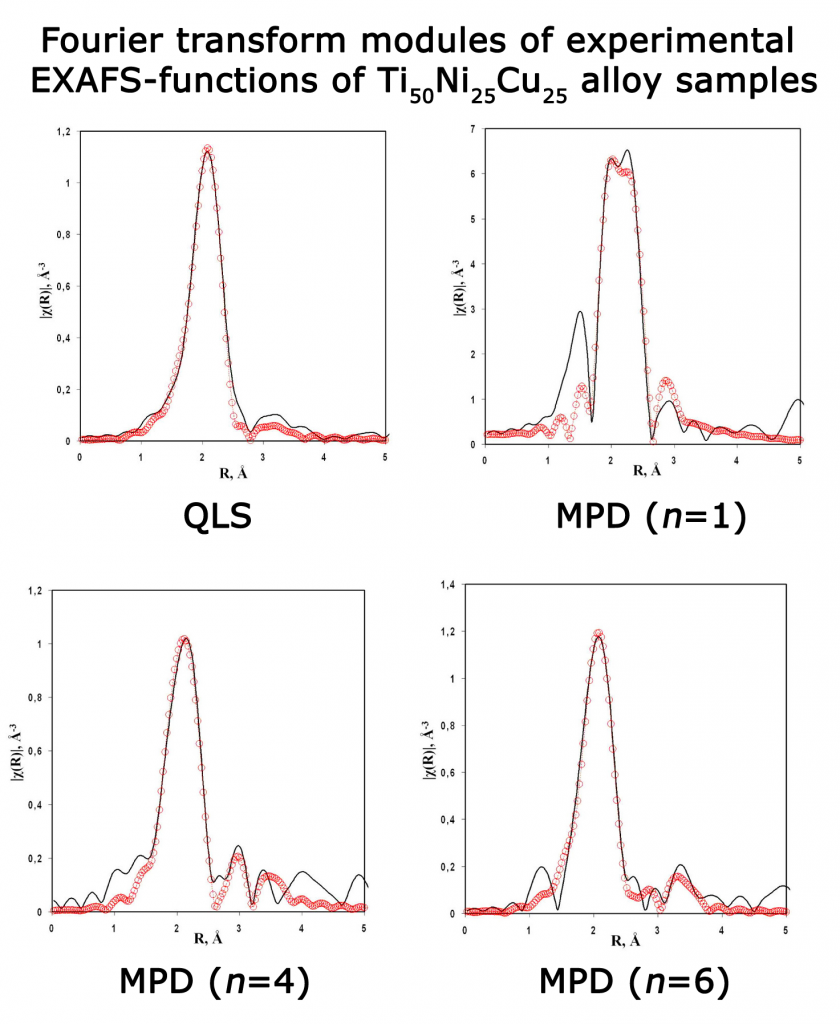
Thematic issue “Acoustic Physics”
We show how an approach based on the methods of magnon straintronics can be used to create magnon logic devices with control over the amplitude and phase of spin waves. Spin wave quanta – magnons propagating in magnetic materials, due to their unique properties, can be used in promising systems for processing information signals with low energy consumption at different spatial and time-domain scales. Low power consumption is ensured by the fact that magnons are chargeless quasiparticles and during their propagation in the layers of magnetic dielectrics there is practically no Joule heating.
Recently, there has been increasing interest in research on energy efficient methods for controlling the properties of propagating spin waves. Magnon devices are considered as an alternative to modules that carry out logical operations based on elements of semiconductor microelectronics based on the use of the charge of current carriers (electrons or holes). In this case, the presence of the spin of current carriers and spin-wave excitations makes it possible to create the next generation of electronics devices – dielectric magnons with significantly improved parameters of speed, power consumption, and smaller spatial dimensions of elements. As a demonstration of this physical effect, using the method of Mandelstam-Brillouin spectroscopy, in structured ferrite-piezoelectric bilayers, voltage-controlled spin-wave transport along a lateral structure consisting of two magnon-crystal microwave guides was investigated. The possibility of efficient tuning of the spin-wave characteristics by applying an electric field to the piezoelectric layer is shown. The transformation mechanism of the spectra of spin-wave signals consists in the value of the gradient of the internal magnetic field controlled by elastic deformations in the region near the gap between the lateral structures. The results obtained can be used to create energy-efficient devices for processing information signals, such as demultiplexers with frequency-space selectivity.
The authors are from Saratov State University and the Institute of Radio Engineering and Electronics of the Russian Academy of Sciences, carrying out research in the Laboratory of magnon metamaterials, created in Saratov in 2012. Two unique complexes of Mandelstam-Brillouin spectroscopy of magnetic materials and living systems, the only two in the Russian Federation, have been launched in the laboratory and are in continuous operation.
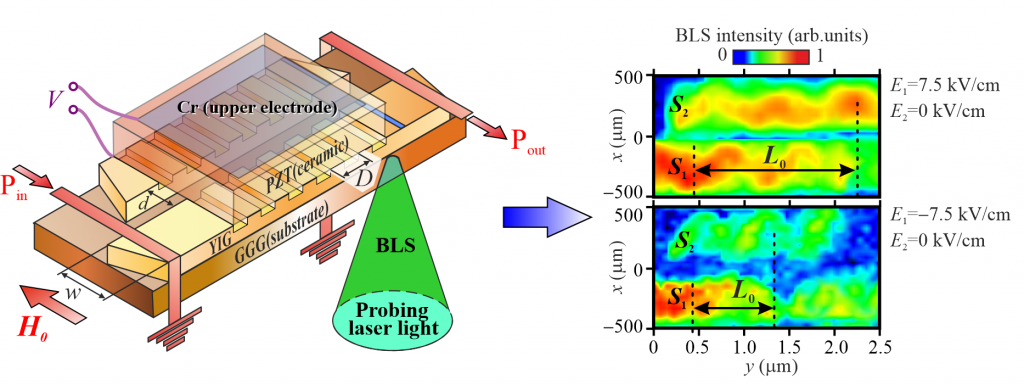
Thematic issue “Nuclear Physics and Elementary Particle Physics. Nuclear Physics Technologies”
The work is devoted to one of the most interesting problems of modern nuclear physics – dynamic modeling of the fusion of atomic nuclei. Experiments on the collision of complex nuclei have been carried out in many laboratories in different countries since the 1960s. As a result of these experiments, a new class of nuclear reactions was discovered – deeply inelastic transfer reactions, and nuclei of new chemical elements with atomic numbers from 104 to 118 were synthesized. Computer simulation of collisions leading to nuclear fusion helps to understand the features of the process and reduce the cost of experiments.
One of the important components in our calculations is the interaction energy of two nuclei, which we obtain by convolving the nucleon-nucleon interaction (“NN forces”) with the densities of interacting nuclei. In recent years, the forces obtained in the framework of the theory of the relativistic mean field (TRMF forces) are considered as the most progressive NN forces. We have systematically applied these forces to simulate nuclear fusion in this paper and also in [1. M.V. Chushnyakova et al. // Journal of Physics G. 48 (2021) 015101]. In total, 6 sets of parameters of TRMF forces that were found in the literature were analyzed. Unexpectedly, it turned out that many of these parameters lead to an unrealistic energy of the nucleus-nucleus interaction: it lacks a region where the strong nuclear interaction exceeds the Coulomb repulsion. Accordingly, fusion of nuclei becomes impossible. Only two sets of parameters (HS and NL2) provide a realistic view of the potential energy with a Coulomb barrier.
In this work, as well as in [1], using 13 reactions as an example, it is shown that TRMF forces with HS and NL2 parameters make it possible to describe high-precision experimental data on nuclear fusion cross sections with a typical error of 3-5%. The figure illustrates this result for five reactions.

Thematic issue “Physics of Cosmic Rays”
One of the most urgent problems of cosmic ray (CR) physics now is the determination of the chemical composition of abundant CRs with the highest energy. During the beginning of the work on the NUCLEON observatory, there was a consensus regarding the behavior of the spectra of the main abundant (produced mainly in sources) nuclei up to energies no higher than several TeV. In 2014-2017 the NUCLEON space experiment was carried out. The NUCLEON is a modern high-tech spectrometer that has incorporated the advanced technologies of physical experiment. A characteristic feature of the equipment is the very insignificant consumed flight resources, such as weight, power consumption, dimensions. This is explained by the fact that a new technique for recording the energy of CR particles has been used for the first time in the spectrometer. The authors called this method KLEM (Kinematic Light – Weight Energy Meter) to emphasize its main advantage – a low-mass energy meter, which gives a gain of almost an order of magnitude in the “aperture/mass” parameter in comparison with traditional methods.
Despite the small amount of consumed resources, over 2.5 years of the orbital experiment, a data bank was obtained, including about 20 million events. This number exceeds the total statistics of all direct experiments with similar goals over the past 50 years, which made it possible to obtain spectra of abundant cosmic ray nuclei up to energies of several hundred TeV. For the first time, the integration of ground-based and orbital measurements of the CR energy spectrum took place, which made it possible to directly calibrate the data obtained in ground-based experiments. The difference of the spectrum from the power-law form at 2 – 500 TeV was statistically proved. In the energy range up to 5·1014 eV, the chemical composition of cosmic rays was determined with element-by-element resolution, and a number of features were found in the energy spectra of CR elements. The result obtained is the factual material necessary for constructing and refining models of the Galaxy and its energy balance.
The team of the authors of the article consists of the staff of the Institute of Nuclear Physics of the Moscow State University, who for many years worked on the preparation and conduct of the NUKLON experiment, and then on the processing of the results obtained. The team is one of the leading research groups in the field of cosmic ray astrophysics.
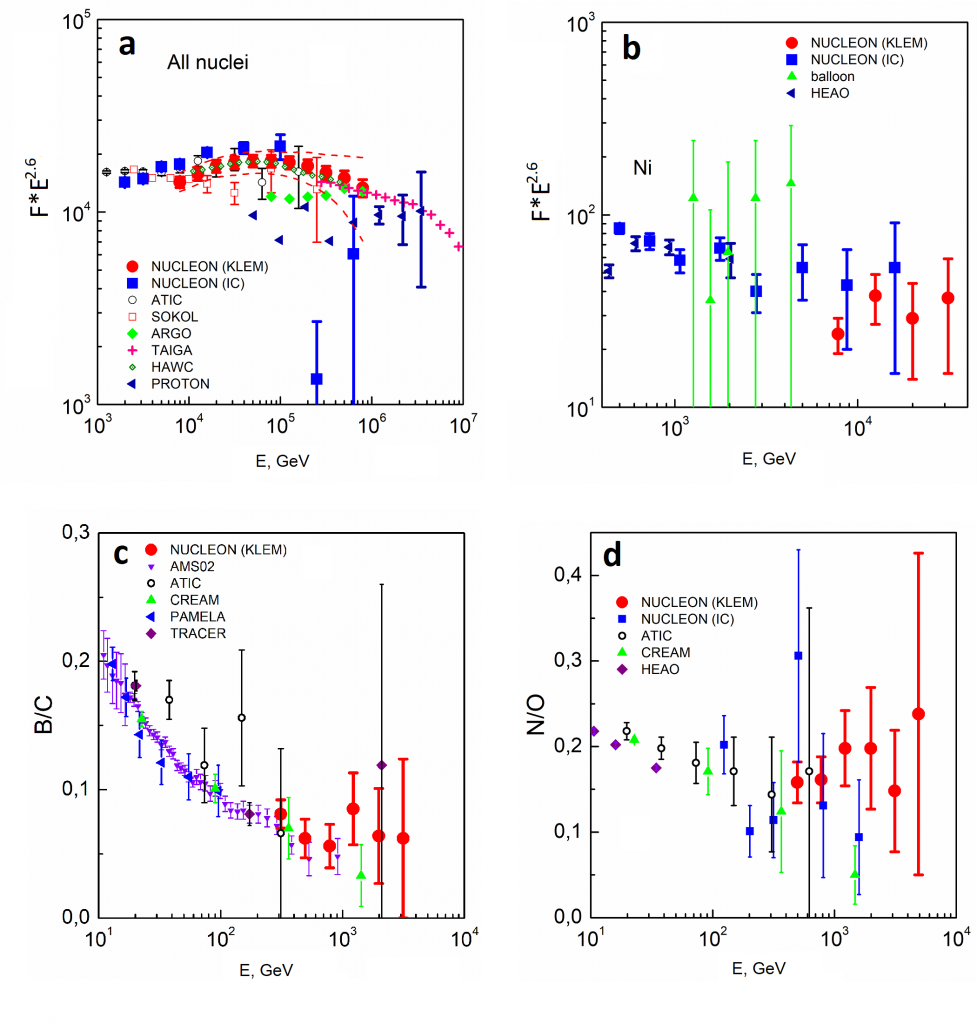
Thematic issue “Physics of Auroral Phenomena”
The work is devoted to the study of the features of the exit to the Earth’s surface of natural magnetospheric electromagnetic radiation of the auroral hiss type according to ground-based observations of electromagnetic fields in the very low frequency range (VLF, from hundreds of hertz to tens of kilohertz). Auroral hiss is one example of noise emissions whose field parameters change randomly over time. Research team from the Polar Geophysical Institute has developed a method for analyzing data from ground-based observations of this kind of radiation. This method uses the representation of the field parameters as their distribution densities, while other methods use the averaged values of the field parameters. To interpret the results of ground-based observations, a numerical model of the propagation of auroral hiss radiation from the generation region to the ground-based observer is developed. The model includes the following modules: 1) generation of electrostatic waves at altitudes of 10,000 – 20,000 km; 2) propagation of electrostatic waves to the region in the ionosphere occupied by small-scale inhomogeneities of electron concentration; 3) scattering into the exit cone of electrostatic waves on small-scale inhomogeneities; 4) propagation of scattered waves in the lower ionosphere and the Earth – ionosphere waveguide.
The paper presents the results of ground-based observations of the VLF auroral hiss at three spatially separated points, Barentsburg (Svalbard Archipelago), Lovozero (Kola Peninsula, Russia) and Kannuslehto (Finland). There were cases when auroral hiss was registered only in the observatory of Barentsburg and when bursts were recorded by all three stations simultaneously. Only the collaborative use of the developed data analysis methods and the propagation model of auroral hiss allowed them to show that the burst recorded in the observatory of Barentsburg is caused by the existence of a scattering area of small-scale inhomogeneities of electron concentration which is located to the southwest of the observatory. The registration of auroral hiss bursts at all three points is caused by the simultaneous existence of two scattering areas in the ionosphere located at different latitudes.
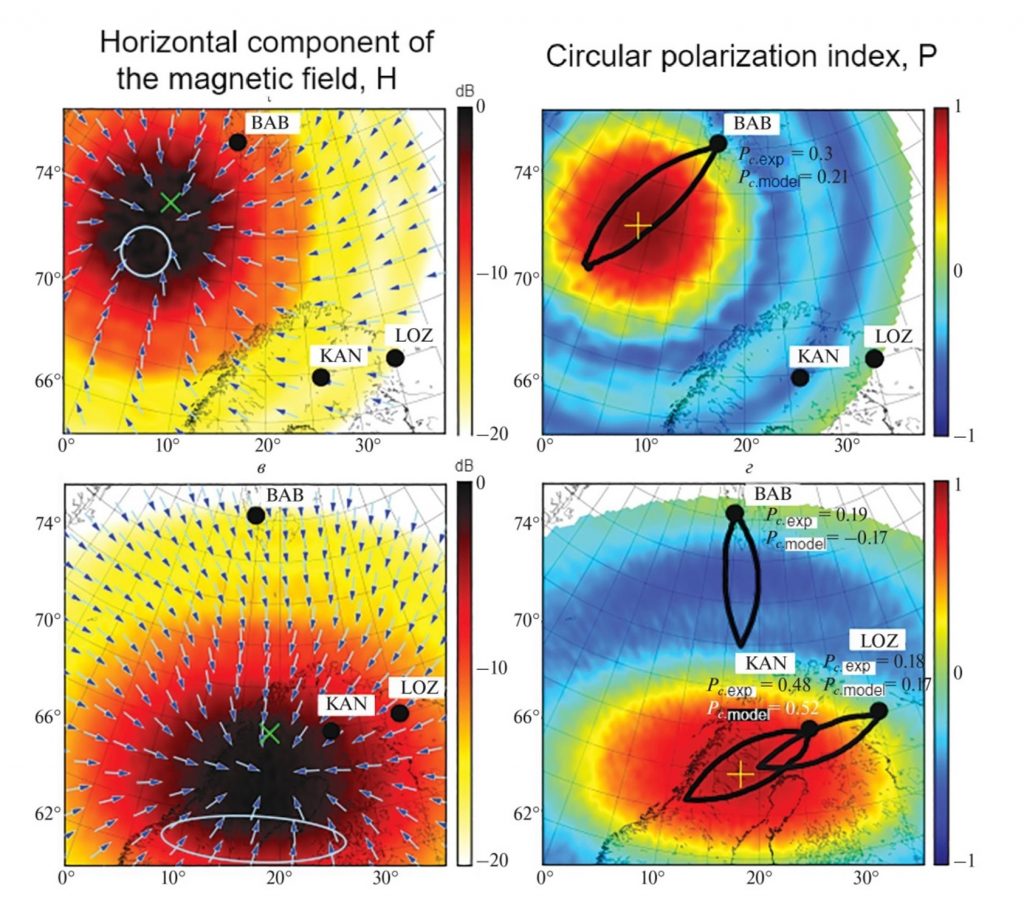
Thematic issue “New Materials and Technologies for Security Systems”
Collective fluctuations of charge density – plasmons, have been studied in two-dimensional electronic systems (2DES) for more than 50 years. Many theoretical and experimental works have considered these excitations in 2DES of various configurations, including those with strong shielding by a closely spaced metal shutter. However, it turned out that in 2DES, only partially covered by a gate, new plasma modes are excited that differ from those previously considered and investigated. Despite its prevalence in actually studied structures, this case has been ignored for a long time. In order to study this issue, experimental work was carried out on 2DES in GaAs/AlGaAs heterostructures, partially shielded by a metal gate. This manuscript concludes a series of papers considering different geometries of the hybrid configuration of a 2DES with a gate and a contact.
Two different geometries were investigated – a 2DES disk with a central gate in the form of a disk of a smaller diameter and a perimetric contact (Corbino geometry) and a rectangular 2DES with a gate in the form of a narrow strip and side contacts. The measurements were carried out using the experimental equipment of the Laboratory of Nonequilibrium Electronic Processes of the Institute of Solid State Physics of the Russian Academy of Sciences in a cryostat with a temperature of 4.2 K and down to 1.5 K under helium vapor pumping. To detect plasma resonances, a unique optical non-invasive technique was used based on the high sensitivity of the luminescence spectrum of two-dimensional electrons to the heating of the 2DES caused by the absorption of the microwave signal.
The paper presents the results of the observation of plasma excitations in the indicated systems, obtained curves of absorption of microwave radiation depending on the frequency and applied magnetic field, and plotted the corresponding dispersion and magnetodispersive dependences. It turned out that in a 2DES with partial shielding, a family of plasma oscillations is observed that is physically different from both ordinary unshielded plasmons and plasmons in fully shielded 2DES. In addition, when the gate and contact were electrically connected, a special low-frequency mode was observed, the properties of which depend on the connected external circuit. Thus, the studies carried out have identified plasmons in partially shielded 2DES into a special family associated directly with charge oscillations in the gate and near gate regions, also containing a “tricky” hybrid mode, frequency, magnetic field behavior and Q factor of which can be changed by connecting various external electrical circuits.
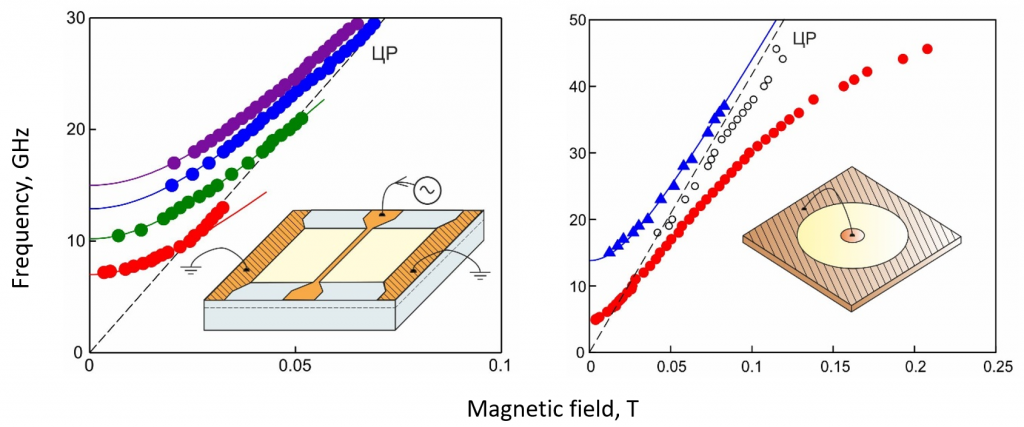
Thematic issue “Wave Phenomena in Inhomogeneous Media”
The paper is devoted to the dynamics of electromagnetic waves at the interfaces between two media, in particular, metals and dielectrics, due to the broad prospects of using composite materials in micro- and nanodevices of photonic and plasmonic technology. A high-frequency electromagnetic field causes oscillations of both free and bound charges in dielectric, semiconducting media, and metals. In this case, as a result of charge oscillations, secondary electromagnetic waves are emitted, which hybridize with polarization waves of bound and free charges in the medium and propagate in the volume of the medium, as well as along the interface between the media in the form of plasmon-polariton waves.
An external electromagnetic field of weak intensity causes a linear response of the dielectric constant of the metal. With an increase in the amplitude of the external field, anharmonic oscillations of electrons and ions, interband transitions appear, which lead to the manifestation of nonlinear polarization mechanisms. An intense electromagnetic wave or a powerful electromagnetic pulse generates nonlinear plasmon-polariton waves – cnoidal waves, kinks and solitons in the volume of the conducting medium and at the interface between the conducting and dielectric media. The properties and dynamics of cnoidal waves and solitons depend on the parameters of the exciting electromagnetic waves and pulses, as well as on the geometry of the system and the properties of the media in which plasmon polaritons are excited.
The paper presents the results of a theoretical study of linear and nonlinear processes during the propagation of plasmon-polaritons at a plane interface between a metal and a dielectric medium, depending on the boundary conditions and the energy density of the exciting electromagnetic wave. The analysis of the dynamics of plasmon-polariton waves was carried out by solving nonlinear equations obtained on the basis of a quantum hydrodynamic model for the Schrödinger equation, which allows one to consistently describe the physical mechanisms causing the nonlinear response of free electrons in a metal to the effect of an external electromagnetic field. It is shown that the profiles of the envelopes of the plasmon-polariton cnoidal waves and their periods are transformed when the source power and/or the conditions for the excitation of plasmon-polaritons at the interface between the media change. In particular, at a certain ratio of parameters, a shock wave in the form of a kink/antikink arises. Thus, by changing the power of the source of the external electromagnetic field, it is possible to control the period and shape of a nonlinear plasmon-polariton wave propagating in plasmonic nanodevices.
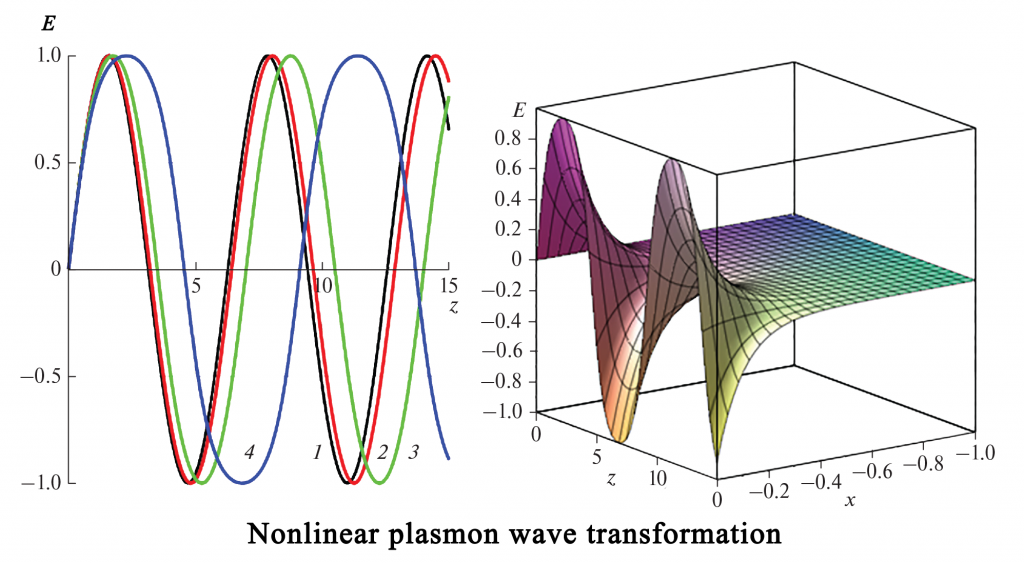
2020
Understanding the principles of Brownian motion of particles in solutions of macromolecules is the most important task for a number of scientific fields. In cell biophysics, one of these areas is related to the study of intracellular transport processes. Various macromolecular biopolymers, such as proteins, polysaccharides, and nucleic acids, occupy from 5 to 40 % of the volume of liquid biological media (in literature, this effect is often called macromolecular crowding), which has a significant impact on all biological processes occurring in the cell. Studying the parameters of the motion of particles and macromolecules in such conditions is extremely difficult since the details of this motion are hidden on the nanoscale. Modern experimental approaches are based on optical measurements, the research capabilities of which in relation to nanoscale objects have a number of significant limitations. Earlier, we proposed a new approach to studying the dynamics of Brownian particles. The approach is based on Mössbauer spectroscopy of nanoparticles dispersed in the studied medium and made on the basis of the 57Fe isotope. Due to the Doppler effect, the Brownian motion of nanoparticles leads to a uniform broadening of their mössbauer spectra. The diffusion coefficient of nanoparticles is directly related to the value of this broadening, which makes it possible to determine it experimentally. The time resolution of the proposed approach is determined by the lifetime of the 57Fe core excited state which is less than 10-7 s, which largely determines the uniqueness of the data obtained.
In this work, for the first time, the nanoscale motion under conditions of macromolecular crowding has been studied using the method of Mössbauer spectroscopy. In this task, we studied the motion parameters of nanoparticles with a diameter of 9 nm that are part of solutions with different contents of large-molecular BSA protein. It was shown that the availability of macromolecules in solutions with identical macroscopic viscosity slows down the average velocity of Brownian motion of nanoparticles in the nanosecond measurement range. This effect increases with the increasing concentration of macromolecules in the solution.
The Brownian motion of particles leads to a broadening of the lines of their mössbauer spectrum. The value of this broadening is directly related to the particle diffusion coefficient in the studied system, which allows us to determine its value by calculations (on the left). In accordance with the Stokes-Einstein equation, the values of the nano-viscosity were calculated from the set values of the diffusion coefficient. Even though the macroscopic viscosity of solutions with different BSA contents is identical, the actual viscosity experienced by nanoparticles depends on the concentration of BSA macromolecules (on the right).
Thematic issue “Fundamental Problems of Nuclear Physics, Nuclei at the Boundaries of Nucleon Stability, High Technologies”
Interest in R-matrix studies of reactions is attracted by the possibility of searching for new ones, refining the characteristics of known shells, and evaluating the cross sections of nuclear reactions from limited sets of experimental data. This work was initiated by the appearance of new experimental data on differential cross sections of the threshold reaction 9Be(p,α2)6Li*.
An R-matrix analysis is performed for experimental data on 9Be(p,p0)9Be, 9Be(p,p1)9Be* (1.670 МэВ), 9Be(p,p2)9Be* (2.430 MeV), 9Be(p,n0)9B, 9Be(p,d0)8Be, 9Be(p,α0)6Li, 9Be(p,α2)6Li* (3.5618 MeV), 7Li(3He,p0)9Be reactions at 6.5–19.5 MeV excitation energies of 10B compound nucleus. Experimental data on differential and integral cross sections of the 9Be(p,α2)6Li* (3.5618 MeV, Eπ=0+) reaction at proton energy Ep = 2.3–4.5 MeV are included in the analysis, along with data on differential cross sections of the 9Be(p,n0)9B reaction at angle 0° in the Ep = 2.2–3.5 MeV energy range.
New 10B levels are determined and characteristics of states detected earlier are improved to supplement the EXFOR database.
